The Most Beautiful Place of Worship in Every State
From coast to coast, places of worship span nearly every architectural style, whether it’s a futuristic church in rural Indiana designed by one of Finland’s greatest architects (Eero Saarinen) or the recently restored Frank Lloyd Wright-designed Unity Temple in suburban Chicago. Mormon temples’ spires soar into the skyline and some Jewish temples are shapely in style, whether it’s a modern box or in perfect pitch with Feng Shui’s curvy chi. And no matter how many decades it’s been since their construction, a tiny steeple in the woods will never slip out of vogue.
St. Lawrence Catholic Parish (Fairhope, Alabama)
With its all-wood interior, and pendant lighting, plus the octagon-shaped elevated skylight, morning sun pours into St. Lawrence Catholic Parish’s interior, reflecting off the stained-glass windows.
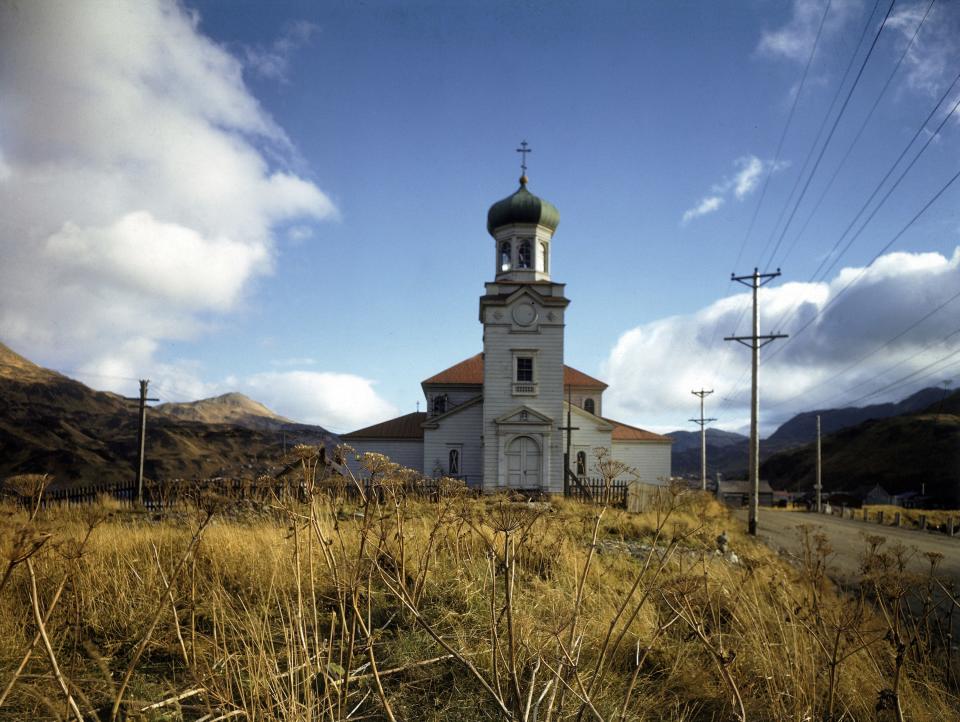
Church In Unalaska
Photographed as often as the state’s moose population, this church’s Russian icons date back to the 16th century (including a mural gifted by Russia’s last czar) and services are in Slavonic. Built in 1896, the church received a full restoration 100 years later.
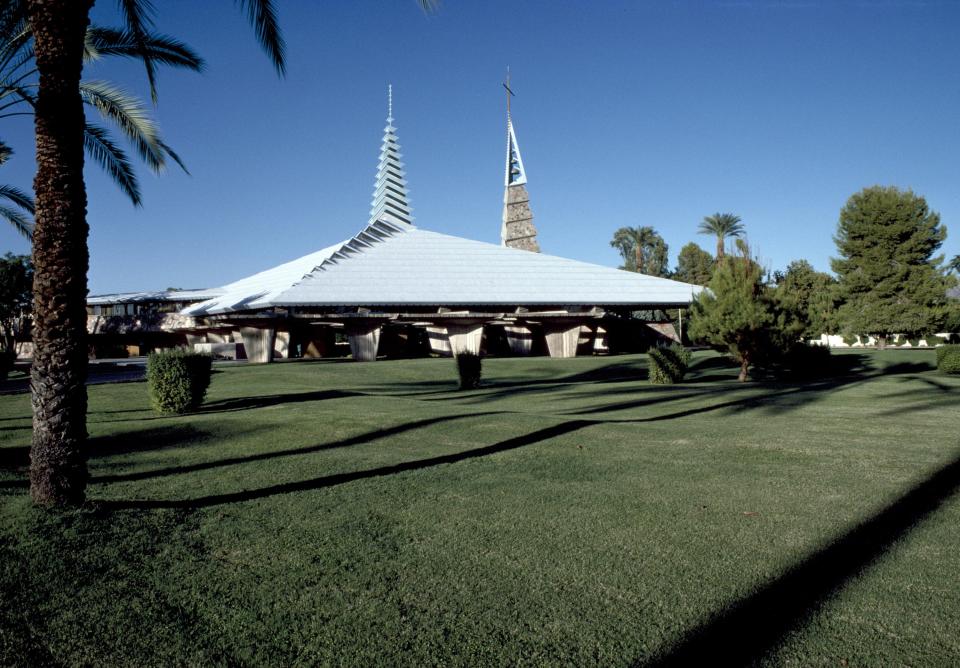
First Christian Church, 6750 North 7th Avenue, Phoenix, Arizona
Based on Frank Lloyd Wright’s drawings—commissioned by Southwest Christian Seminary in 1949 but never built—First Christian Church of Phoenix’s triangle-shaped building with a 77-foot-tall spire has been a must-see for design fans since its 1973 completion. There’s also a free-standing 120-foot bell tower.
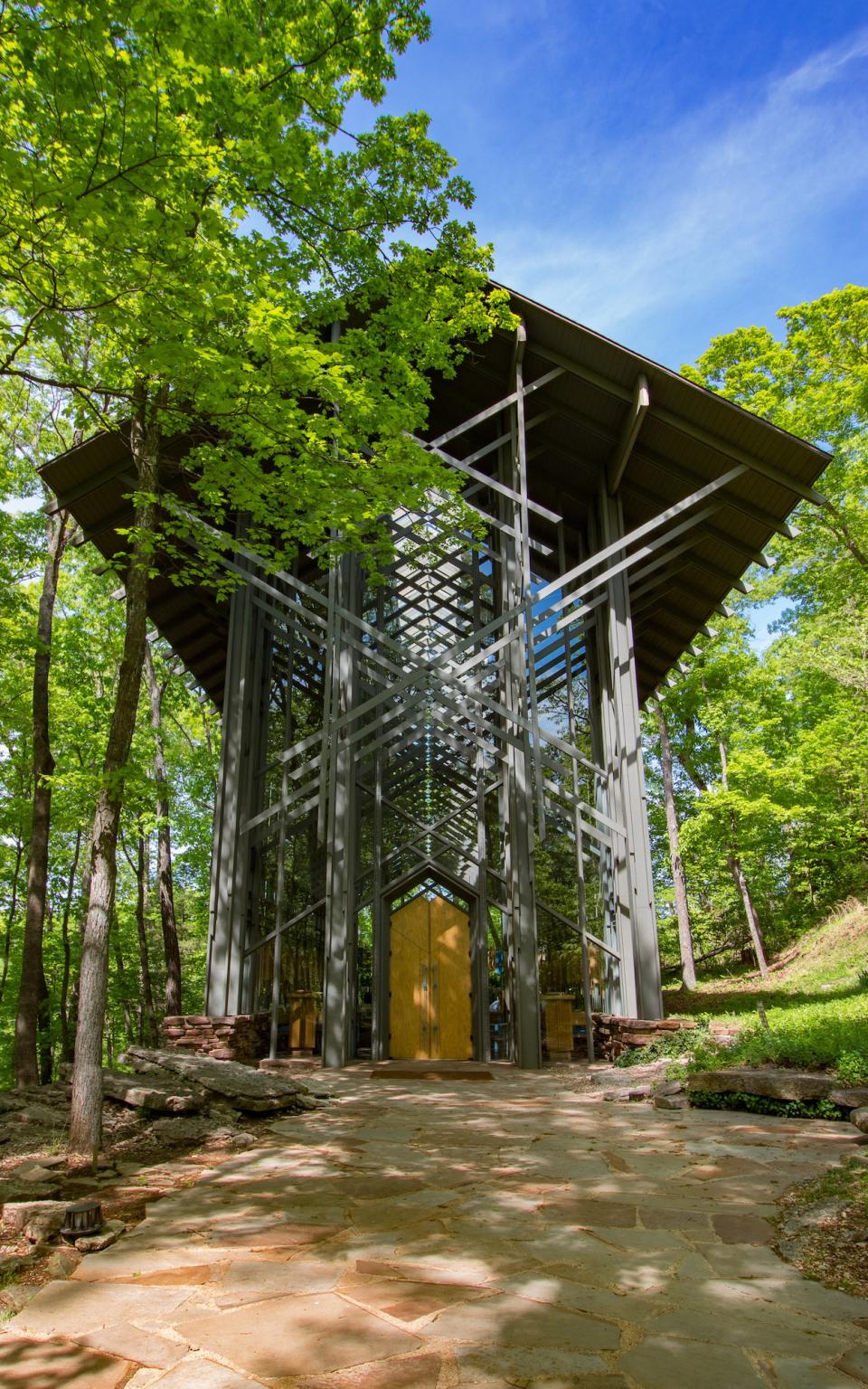
Thorncrown Chapel, Springtime
Inspired by Frank Lloyd Wright’s iconic Prairie style, this 37-year-old Thorncrown Chapel crafted from mostly Southern pine wood and featuring a staggering 425 windows is on the National Register of Historic Places (a rare feat considering its age).
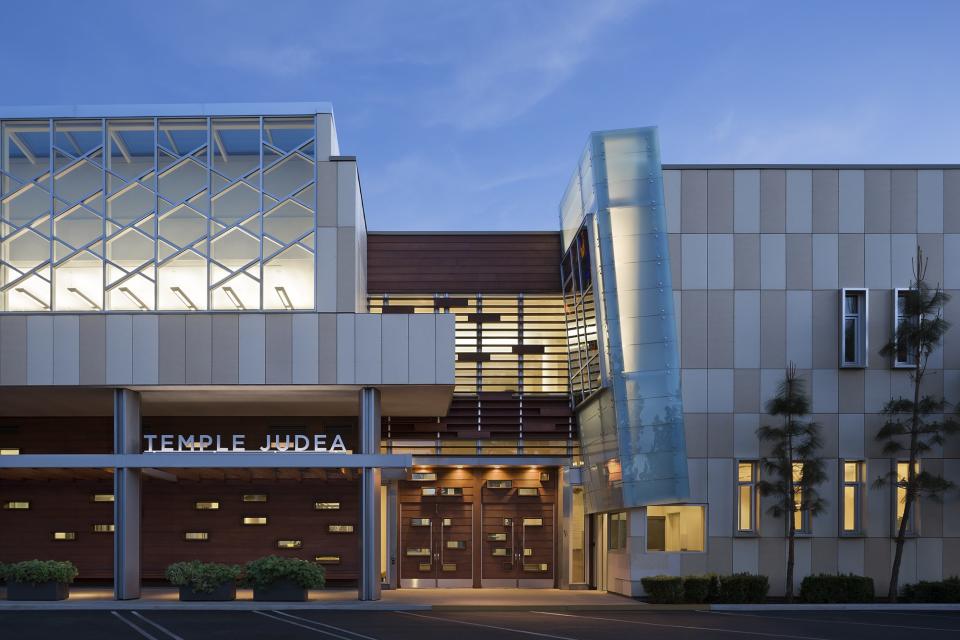
Earning the Herman Coliver Locus Architecture award from the AIA in 2012, the year it was completed, Temple Judea’s striking exterior includes mosaic steps and a laser-cut metal veil of Hebrew letters.
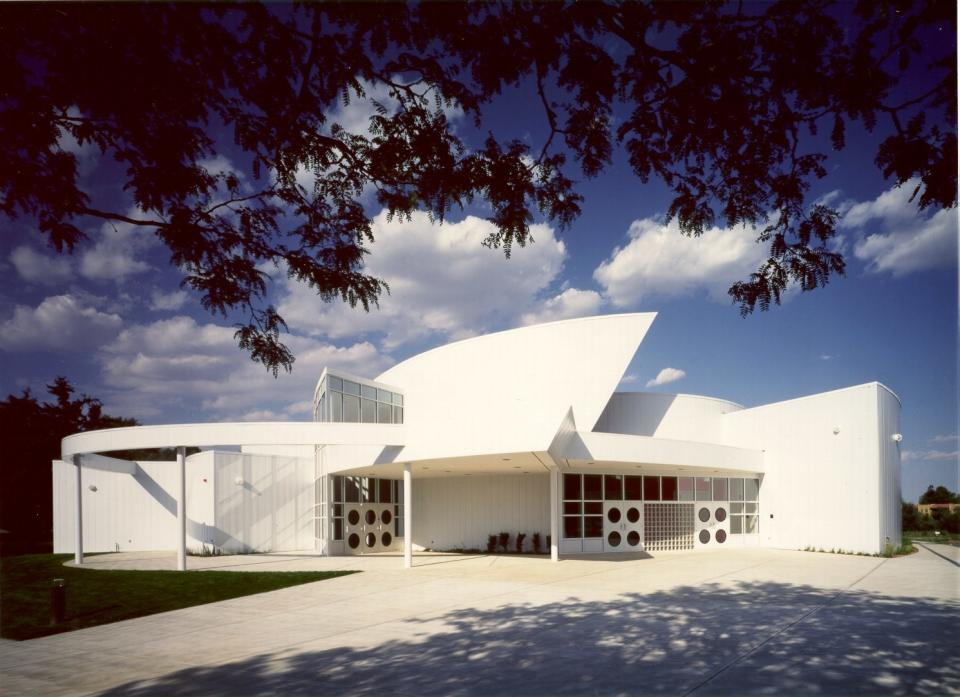
The spaceship-like design of Mile Hi Church Sanctuary, completed in 2008, features a dome with exterior arches—just like another dome structure constructed on the property during the 1970s. Sanctuary seating is angled on a half-moon curve. Pictures is the Community Center which stands adjacent to the Sanctuary.
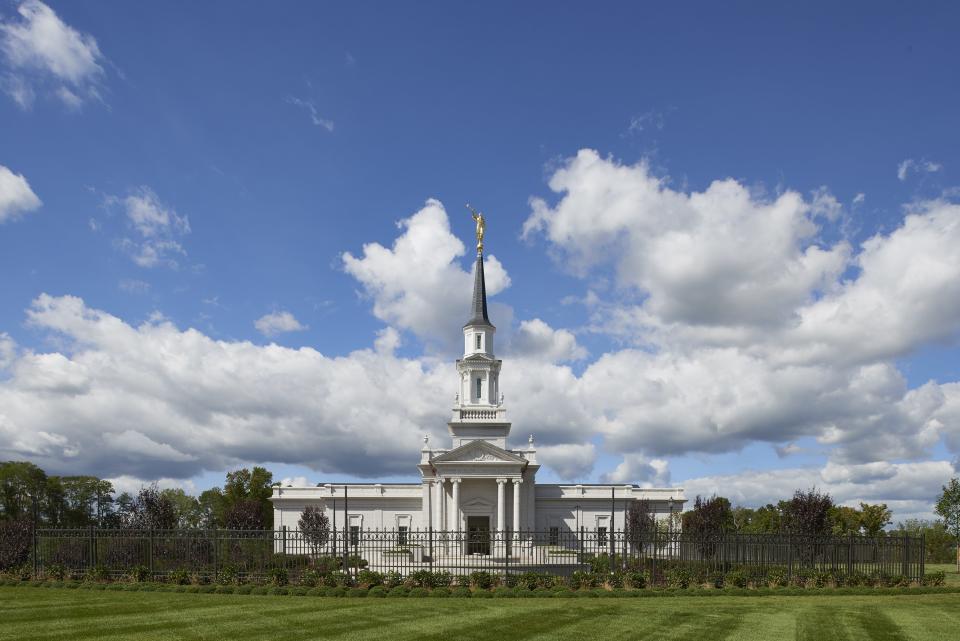
With formal gardens in front, the Hartford Connecticut LDS Temple boasts an elegant entry. Once inside, this new temple (open since 2016) features gold Art Deco-like railings around the bapistry area and soaring ceilings with crown molding in the Celestial Room.
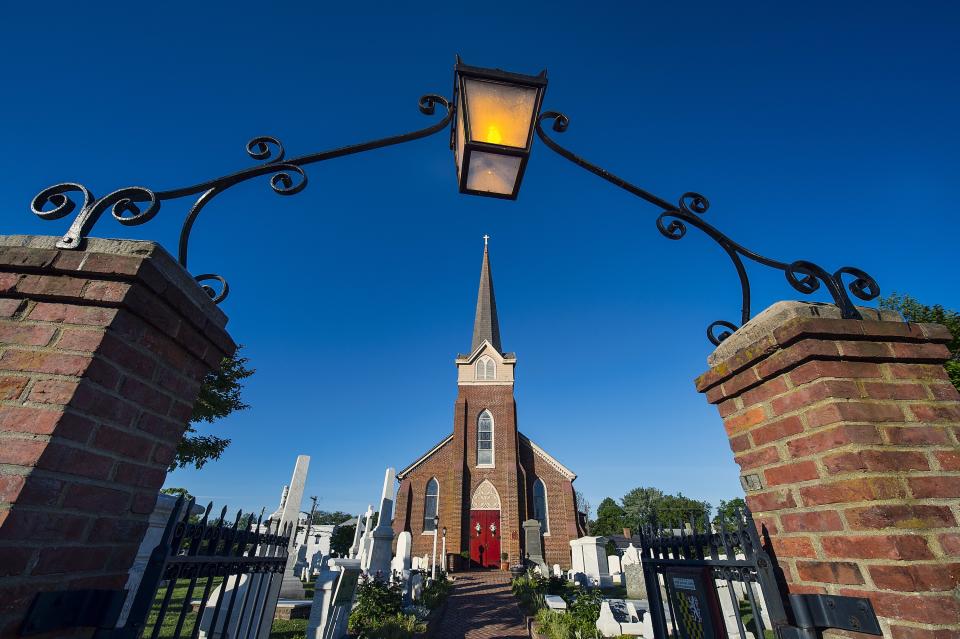
Historic St Peter's Episcopal Church
Dating back to 1708, the churchyard (resting places for many notables in Lewes) in front of Historic St. Peter’s Episcopal Church is framed by a wrought-iron archway and then, beyond, is the brick chapel (built a century later). The original communion table is still in use for Sunday service.
St. Bernard de Clairvaux (North Miami Beach, Florida)
St. Bernard de Clairvaux is more widely known to tourists than parishioners (for Sunday-morning mass). During the 1920s, William Randolph Hearst bought the stone monastery cloister (dating back to 1133 AD in Spain) and shuttled it to New York City in parts. Not until the middle of last century, however, was it reinstalled in Florida.
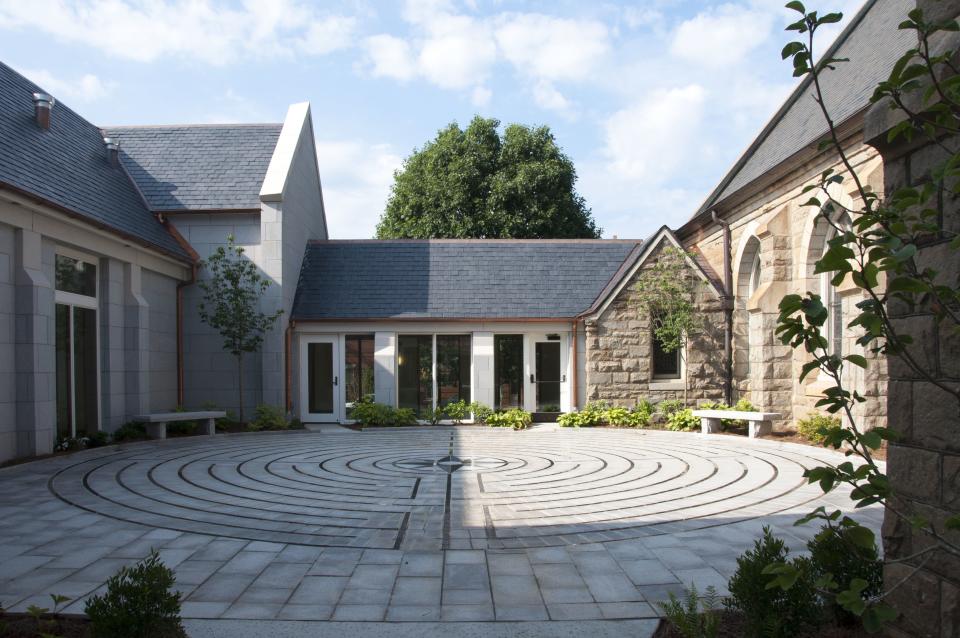
Crisscrossed wood beams and pendant lighting brighten up the interior of this Episcopal church’s new chapel in a recent renovation, recognized by AIA for the Faith & Forum National Design Award for Religious Architecture. (The church dates back to the 1890s.)
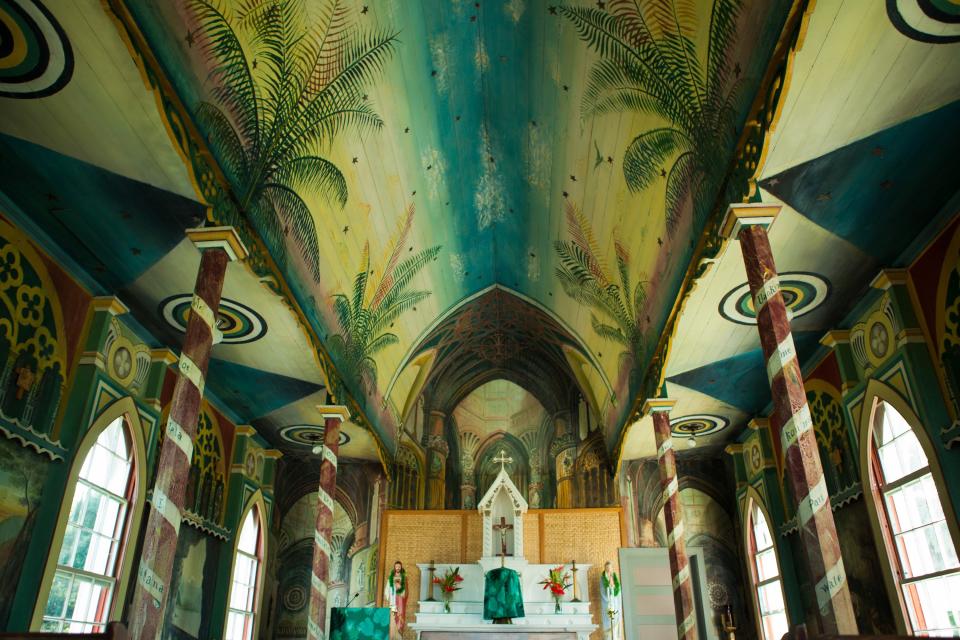
Overlooking beautiful and historic Kealakekua Bay, St.
Past its traditional Spanish Gothic exterior, St. Benedict’s—framed by lush tropical landscaping—is a tapestry of murals, frescos and folk art on the inside. Built by a priest in 1899 who also wanted to add colorful accents, he used the art to teach spiritual lessons to illiterate Hawaiians.
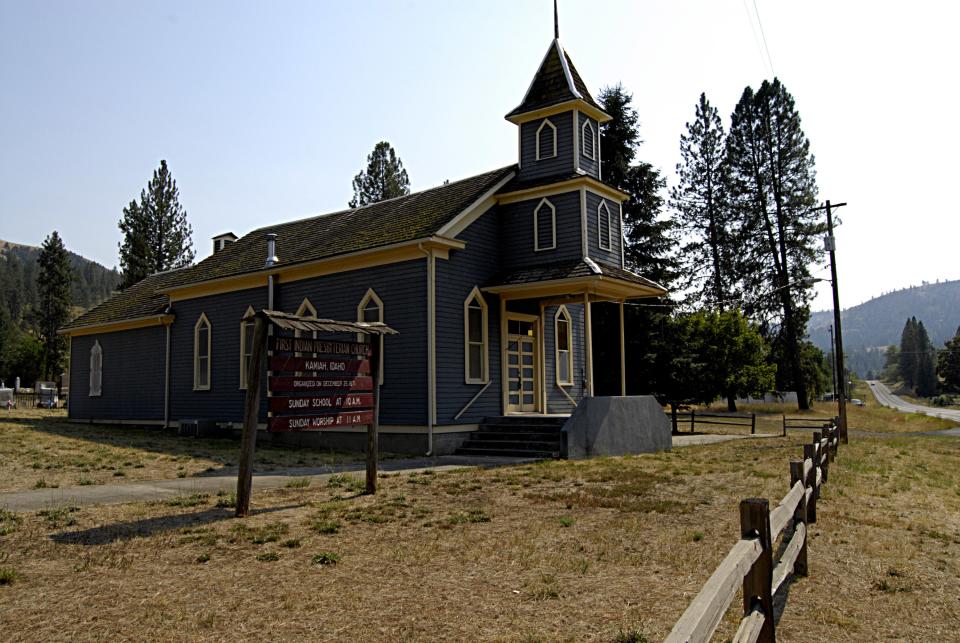
First indian presbyterian church and indian cemetery
With its cornflower-blue exterior and charming Gothic Revival design, First Indian Presbyterian’s prairie perch is fitting. It was built in 1871 by the chief of an Indian tribe and still meets today, singing hymns in the Nez Perce language.
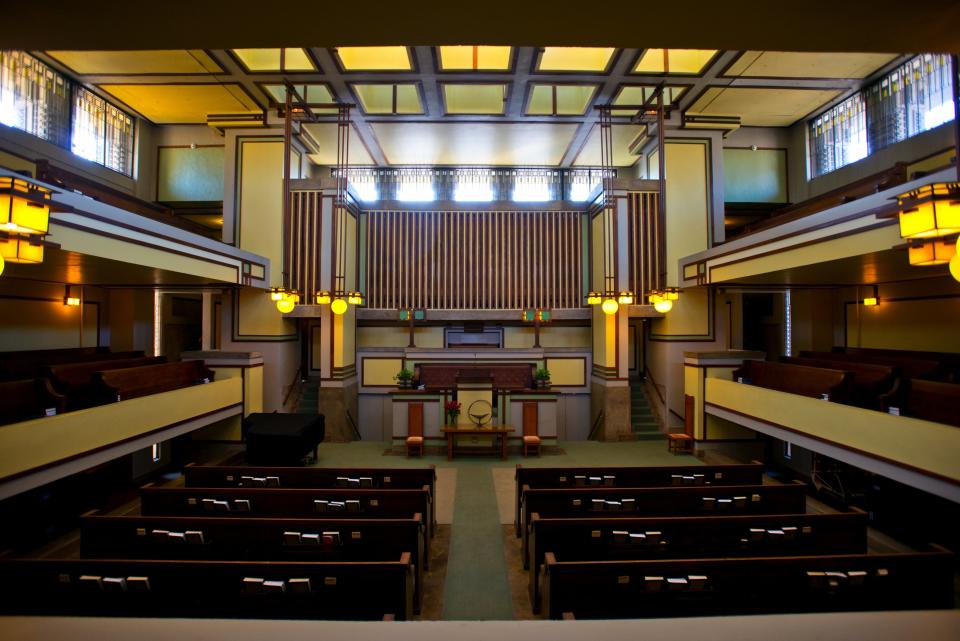
Unity Temple, Oak Park, Illinois
One of Frank Lloyd Wright’s commissioned designs, and in the same Chicago ‘burb where he raised his family, Unity Temple is fresh off an extensive facelift to the tune of $25 million that replaced every pane of glass and honored Wright’s original color palate.
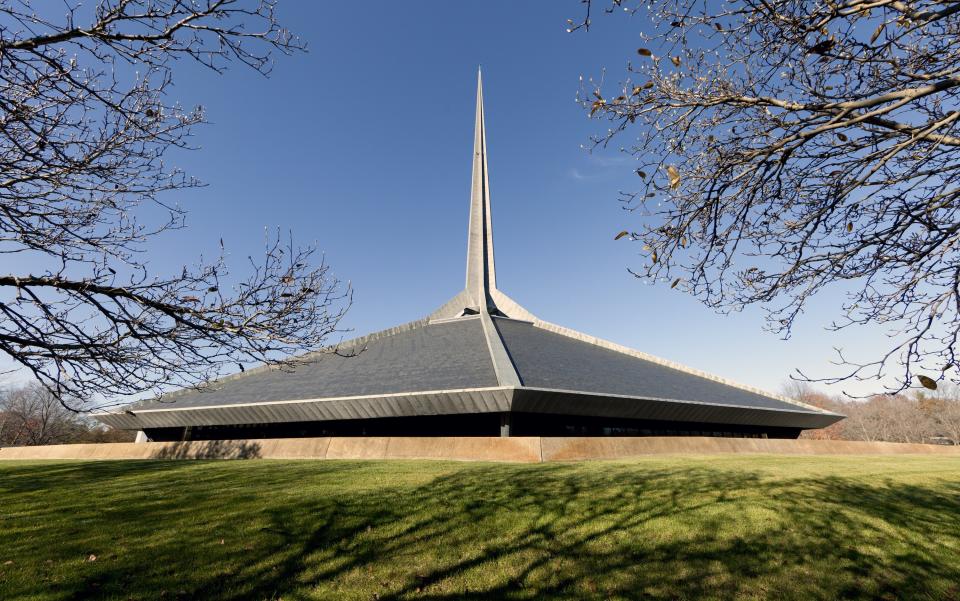
North Christian Church, designed by Eero Saarinen, Columbus, Indiana
Finnish architect Eero Saarinen is more widely known for his industrial designs, including the Womb chair, than places of worship but that’s what makes North Christian Church so intriguing. It was completed in 1964.
St. Luke the Evangelist Catholic Church (Ankeny, Iowa)
With one section of the limestone and weathering steel building jutting out into the prairie, this church is some serious eye candy. The sanctuary’s cathedral ceiling is stunning with honey-hued wood panels supported by steel beams, with pews positioned at a subtle V.
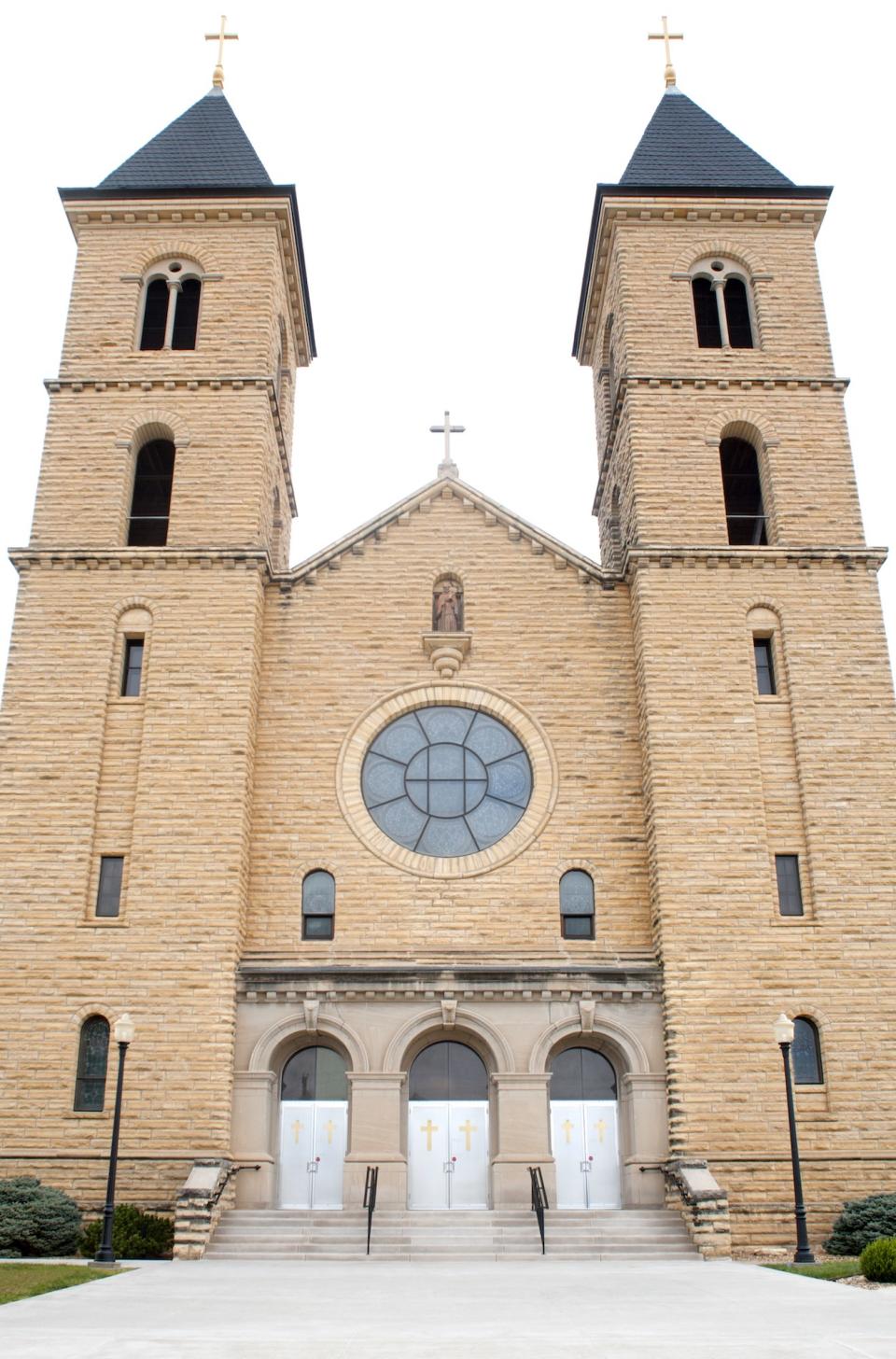
The Cathedral of the Plains in Victoria, Kansas
Also called Cathedral of the Plains, this basilica—completed in 1911—is on the National Register of Historic Places and flaunts 48 stained-glass windows reportedly now worth a million dollars.
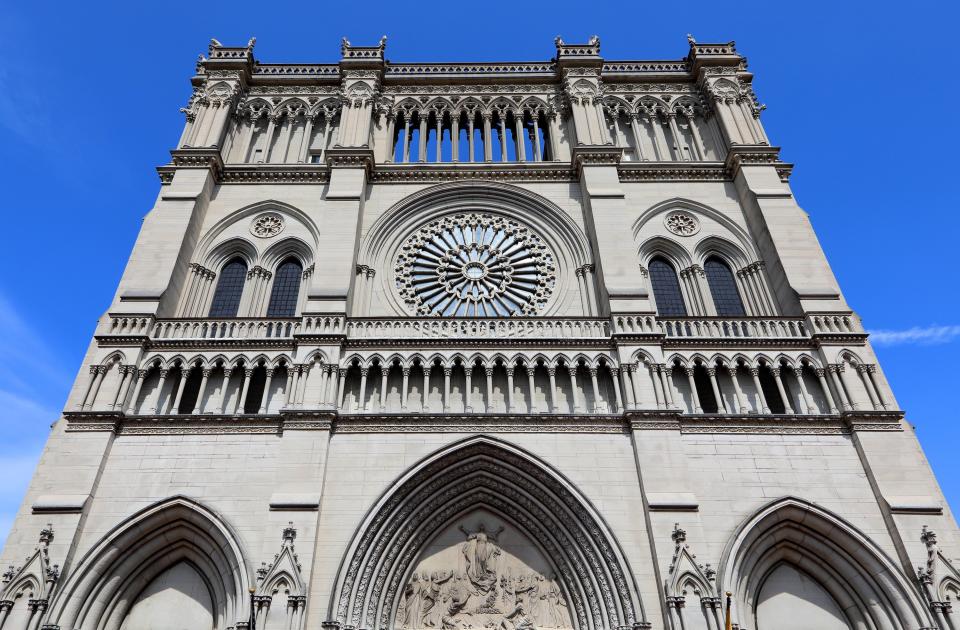
Covington Cityscapes And City Views
Since 1901, services have been held in this basilica, crafted from Bedford stone and red-ludovici roof tile and inspired by St. Denis in France. Three pipe organs prove the acoustics in here are amazing.
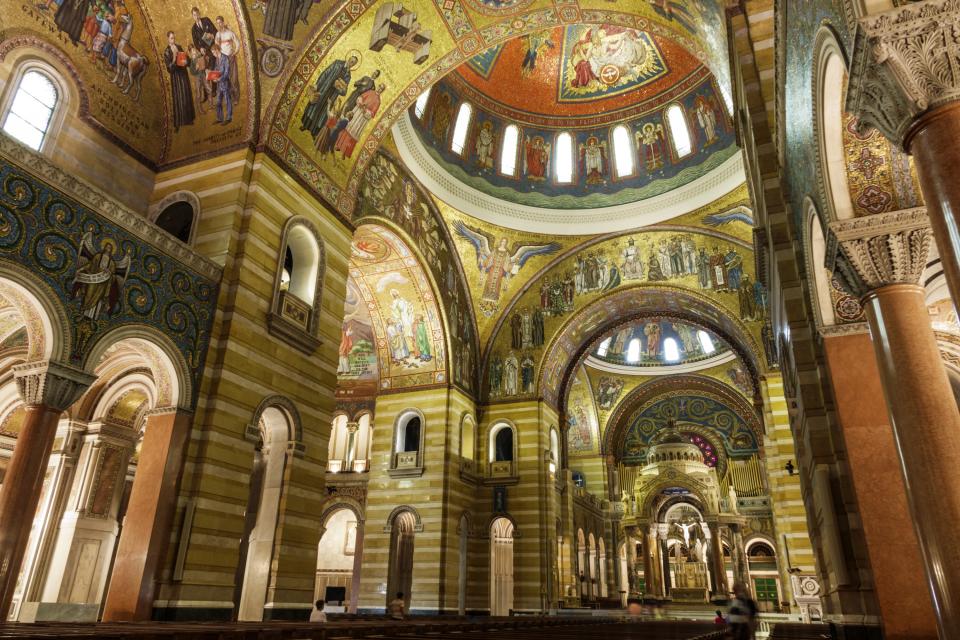
Saint Louis Cathedral, interior.
Holding reign as the oldest continual operating Catholic cathedral in the country, St. Louis Cathedral’s triple steeples have welcomed parishioners since 1727, and rebuilt in 1794 after a fire. It’s located on Jackson Square.
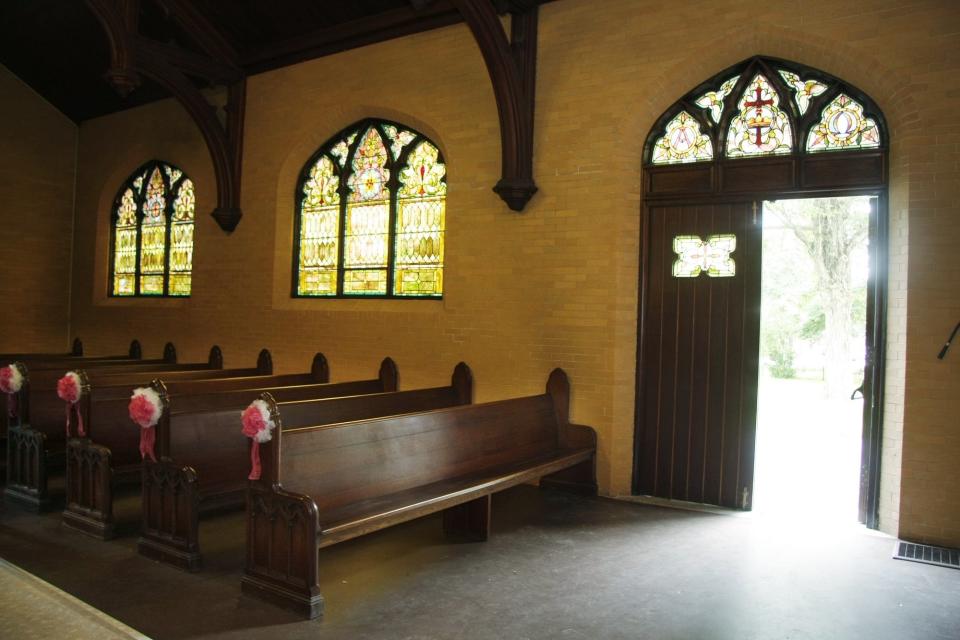
The Samuel Wilde chapel, built in 1902, includes such features oak pews with end pieces that were c
Now a site for weddings and funerals, this gorgeous Gothic-style chapel was built in 1902, using cypress for the interior, hiring a Boston firm to craft stained-glass windows and carving oak pews by hand.
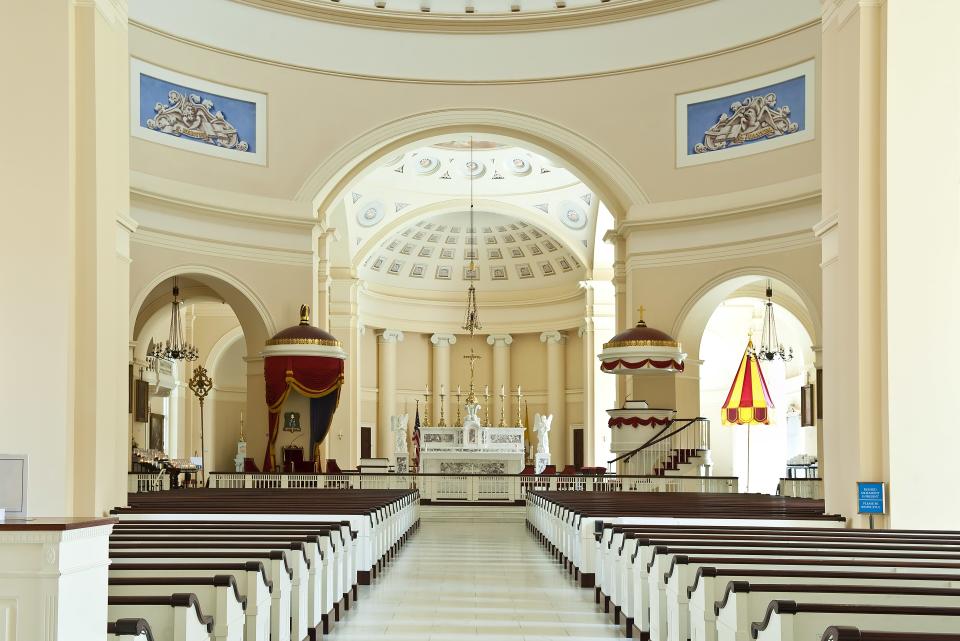
America's First Cathedral, the Basilica of the National Shrine of the Assumption of the Blessed Virgin Mary, Baltimore, Maryland, USA
Carrying the distinction of being America’s first cathedral, Baltimore Basilica was constructed in the early 1800s and received an extensive restoration over an 18-month period between 2004 and 2006. Also worth seeing: the Pope John Paul Garden next door.
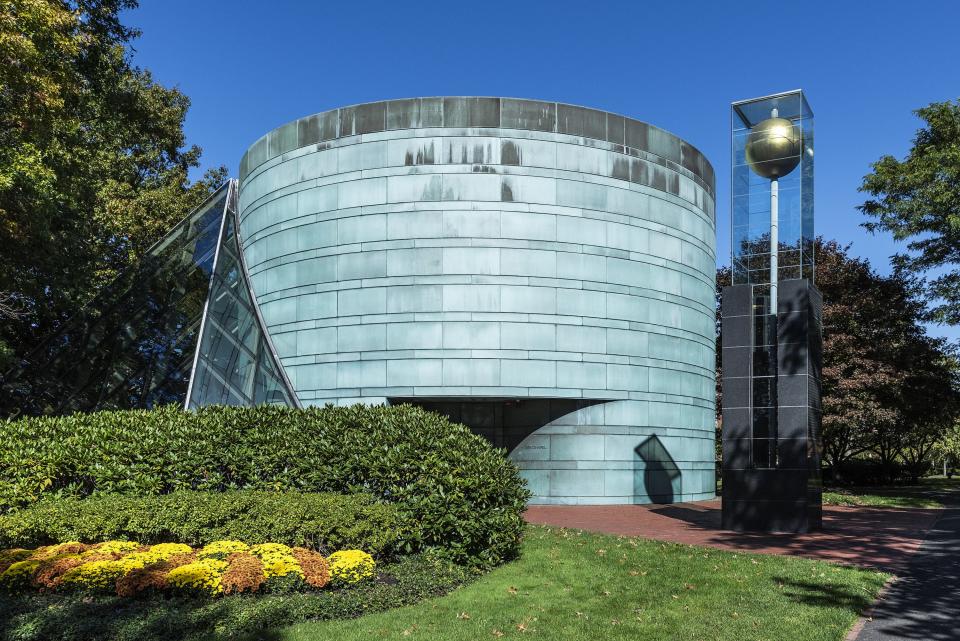
The MBA Class of 1959 Chapel, Harvard University
A gift from the Harvard Business School’s class of 1959, this cylinder-shaped chapel designed by Moshe Safdie and built in 1992 received LEED Gold Certification, in 2011.
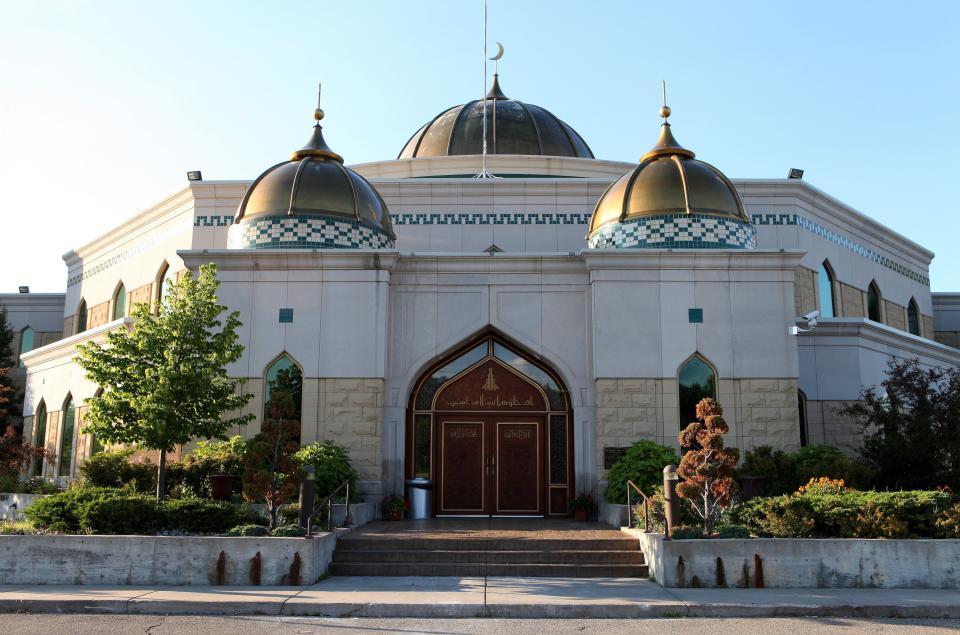
Dearborn Cityscapes And City Views
Since 1963, much of the Detroit area’s Muslim population has met in this mosque, constructed in 2005 and North America’s largest mosque. Spanning 92,000 square feet, it cost $14 million to build and can hold 1,000 people for prayer services.
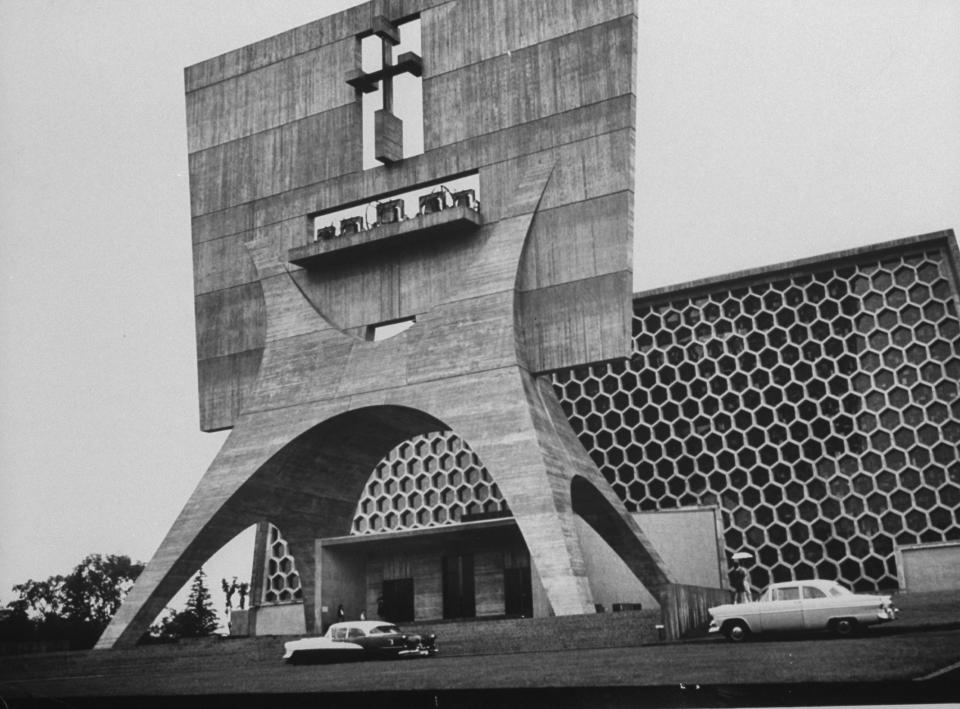
Abbey Church Of The St. John's Benedictine Monastery
This Benedictine monastery was established in the 1850s by five monks from Pennsylvania and is now home to one of the country’s largest Benedictine abbeys. In 1961 Marcel Breuer constructed the church’s contemporary concrete structure, which includes the largest wall of stained glass in the world.
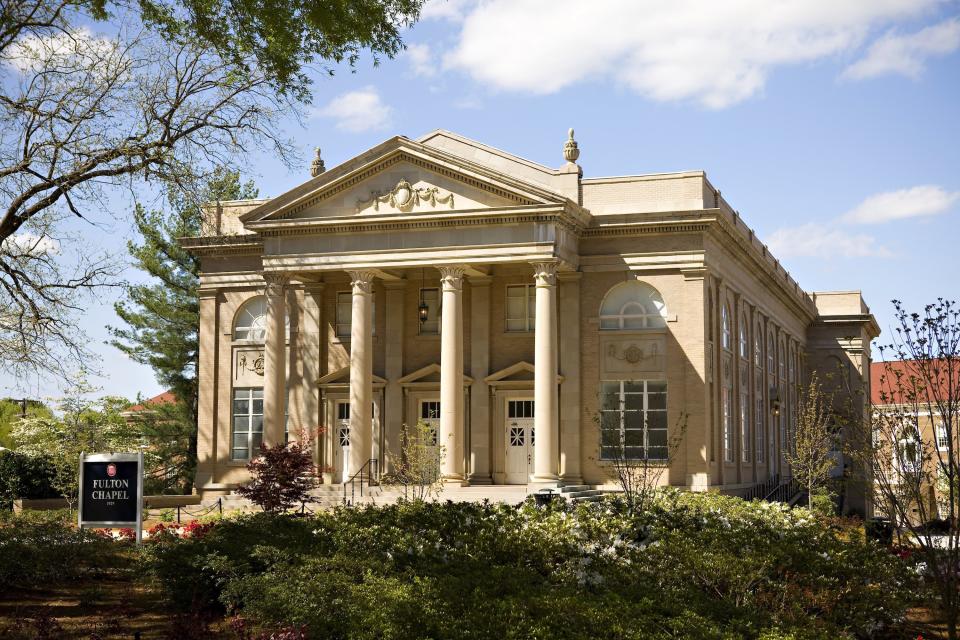
University of Mississippi Campus
While not used exclusively for religious services, this historic building—a landmark on campus since its 1927 debut—can accommodate up to 650 people for performances of many kinds, including theatrical events.
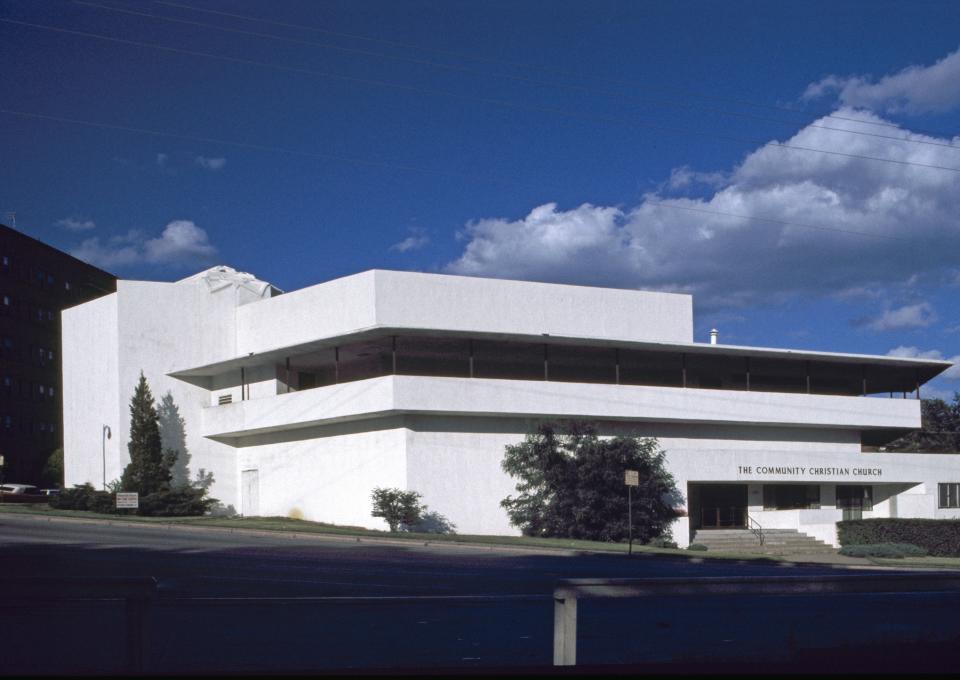
Kansas City Community Christian Church, 4601 Main Street, Kansas City, Missouri, 1940
Frank Lloyd Wright’s architecture shines in the Community Christian Church design, a project he was commissioned for in 1940. But it wasn’t until 1994 that the designs for his Steeple of Light—lit every weekend—came to fruition.
Our Redeemer’s Lutheran Church (Helena, Montana)
Resembling a modern farmhouse, Our Redeemer’s Lutheran Church worked with an architect to create a cozy—but contemporary—vibe for Sunday services. Lots of right angles and clean lines gave the this Lutheran church a fresh look.
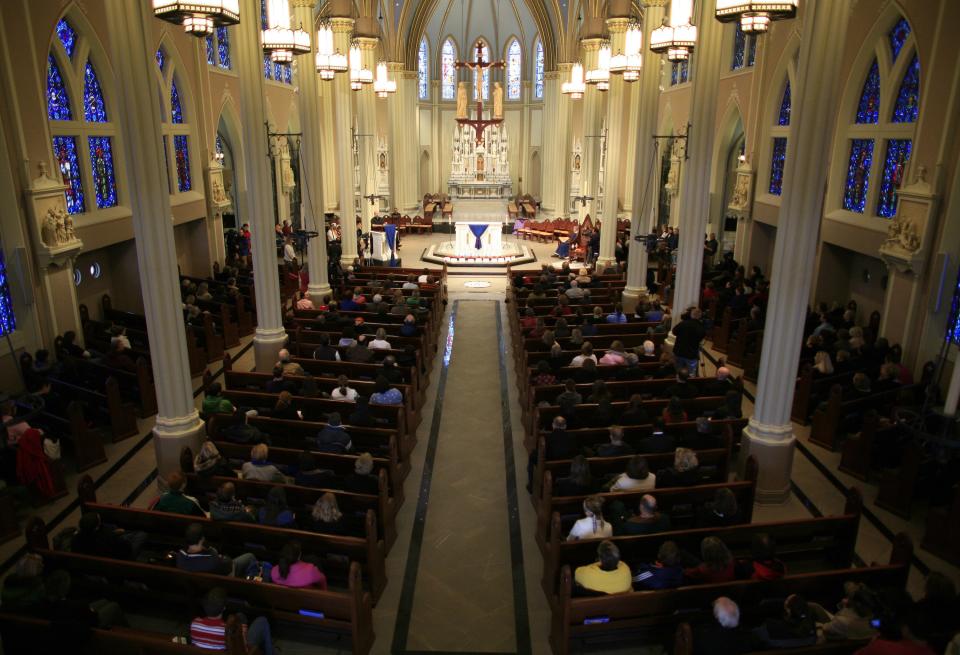
Nine Dead After Shooting Spree In Omaha Mall
This grand chapel on Creighton University’s campus featured arched stained-glass windows, soaring ceilings and columns everywhere.
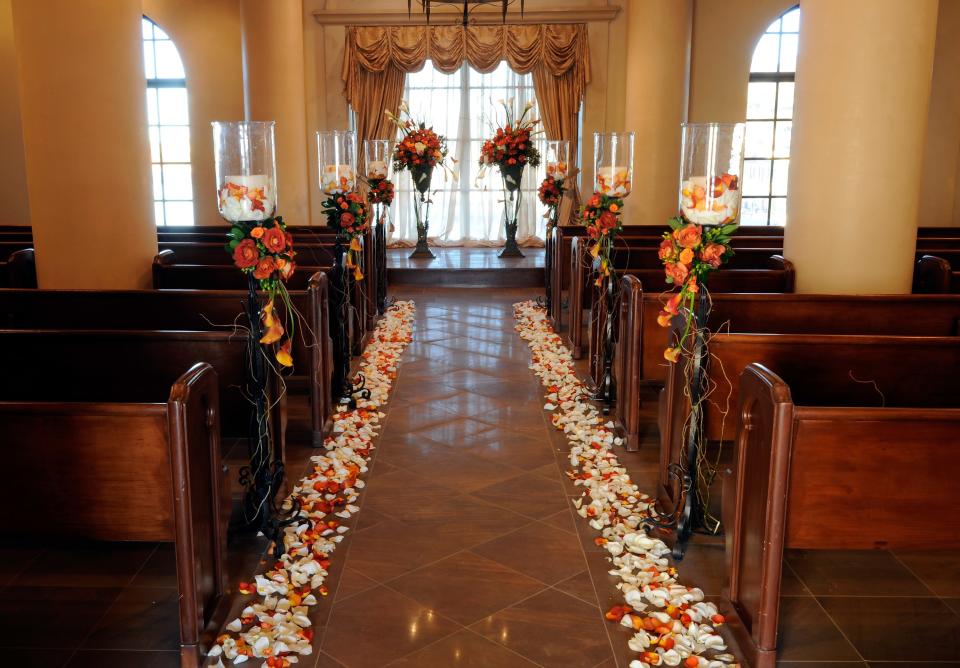
Ravella At Lake Las Vegas Prepares For Grand Opening
Sin City is filled with wedding chapels but this one is less kitsch and more elegance, featuring columns and hand-carved pews (and no Elvis). While scriptures are being read, take a peek outside and you just might think you’re in Tuscany…not Las Vegas.
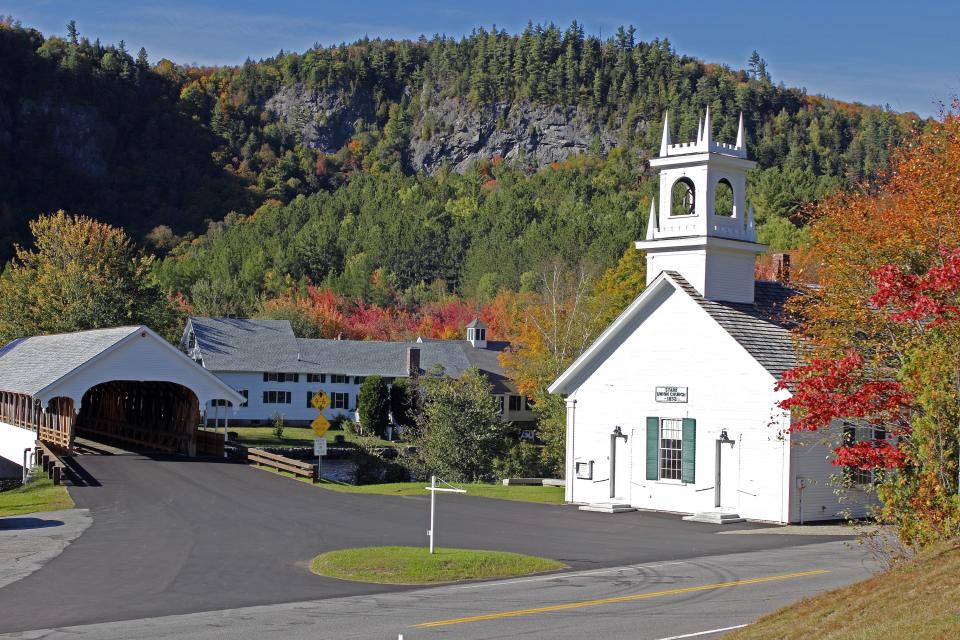
Stark Union Church Stark New Hampshire New England
Particularly when fall foliage is in full swing, Stark Union Church’s open bell tower, plus the adjacent covered bridge, frames the landscape beautifully and its emerald-green shutters evoke a storybook setting.
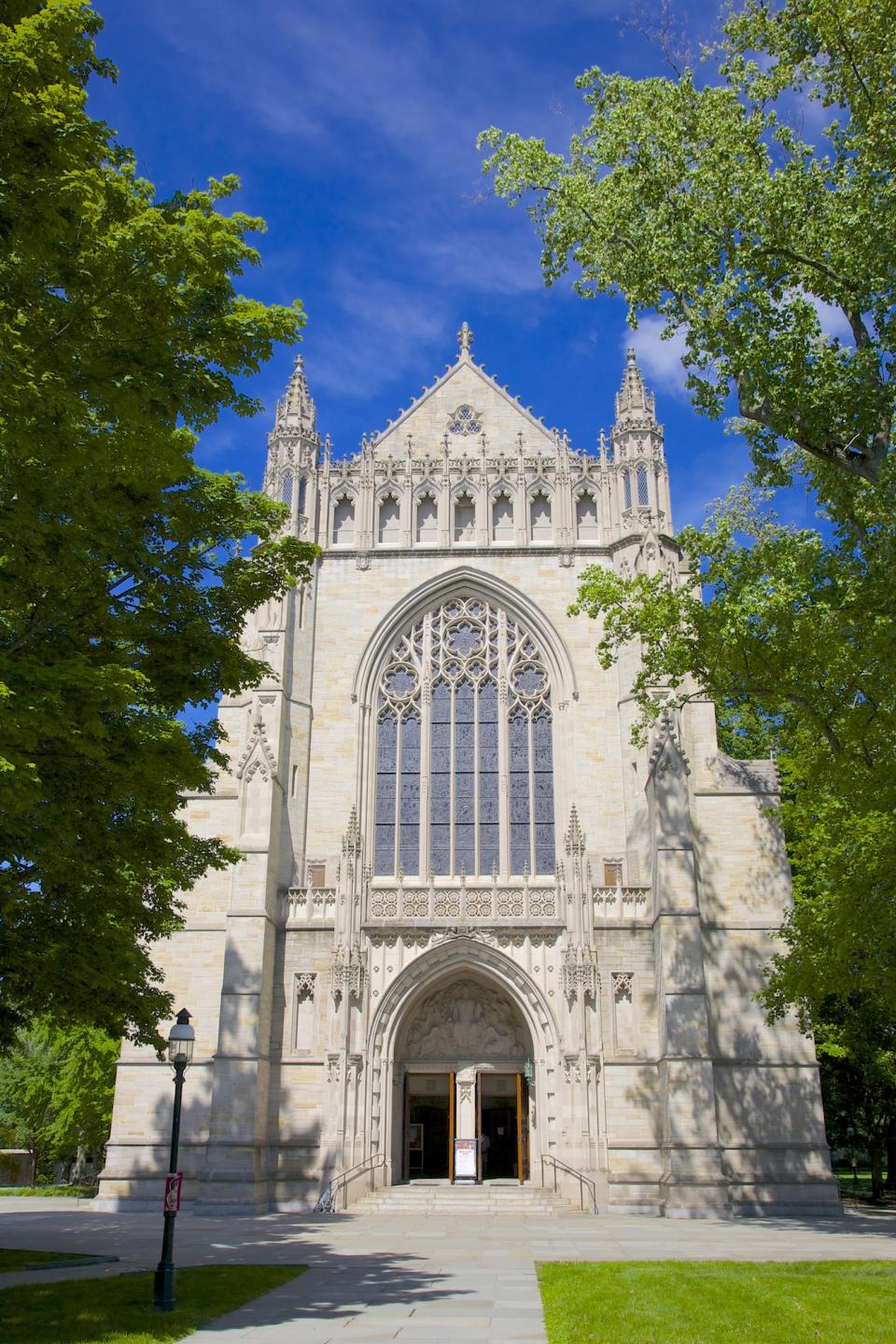
Gothic chapel, Princeton, NJ
Marked by the “Song of Vowels” sculpture (Jacques Lipchitz) out front, and next to the Firestone Library, this soaring cathedral hosts worship services every Sunday as well as concerts.
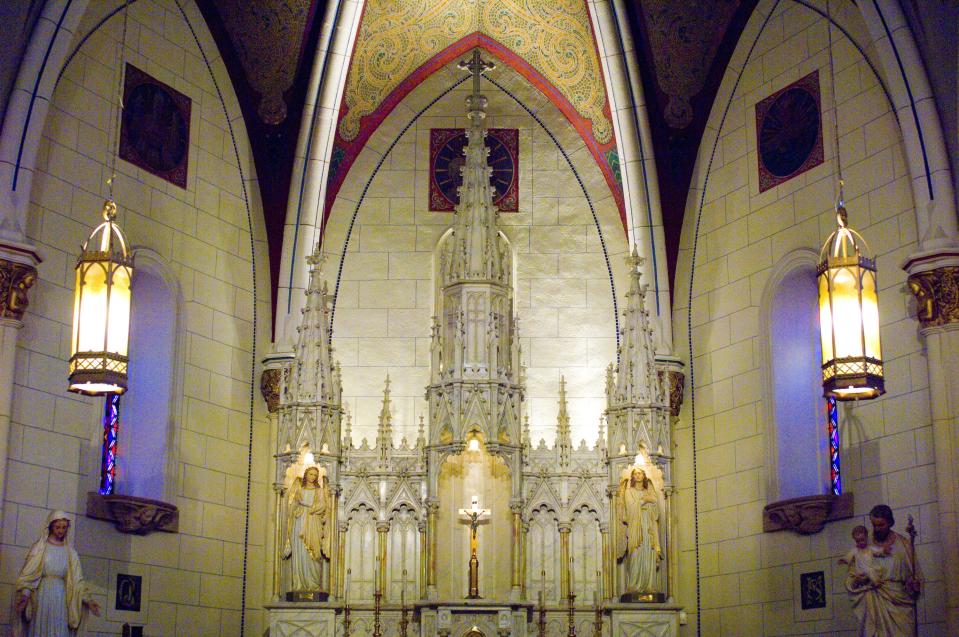
Loretto Chapel in Santa Fe, New Mexico
Modeled after Sainte-Chapelle in Paris, this intimate Gothic-style chapel in downtown Santa Fe features the often-photographed, free-standing circular Miraculous Staircase.
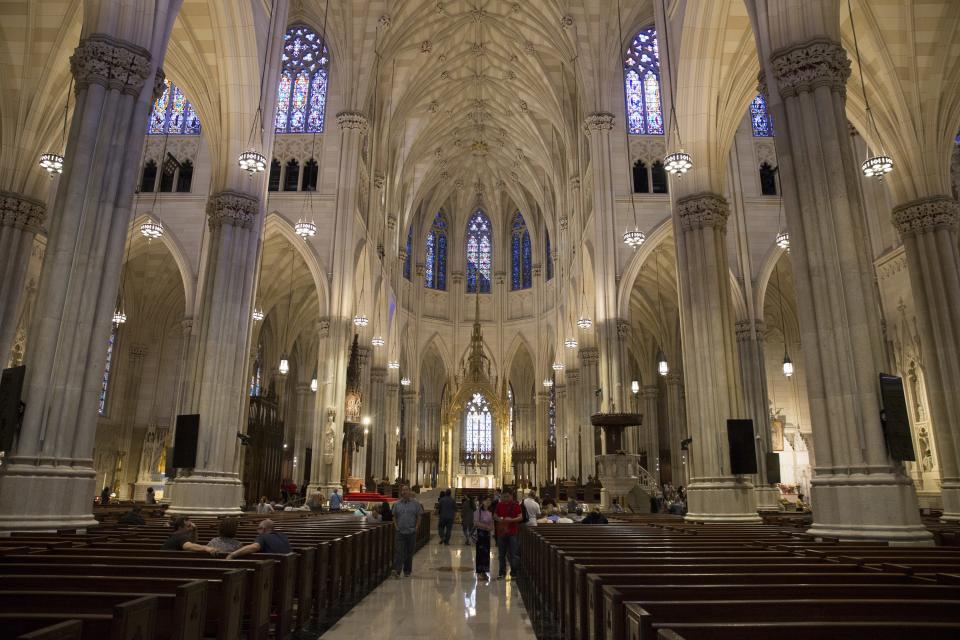
Daily Life In New York
Sunlight glinting through the stained-glass windows and the vaulted ceilings create a calm setting in the midst of bustling Manhattan at Saint Patrick’s Cathedral, built in 1878 and in a Neo-Gothic style. A $177 million restoration wrapped up in 2015.
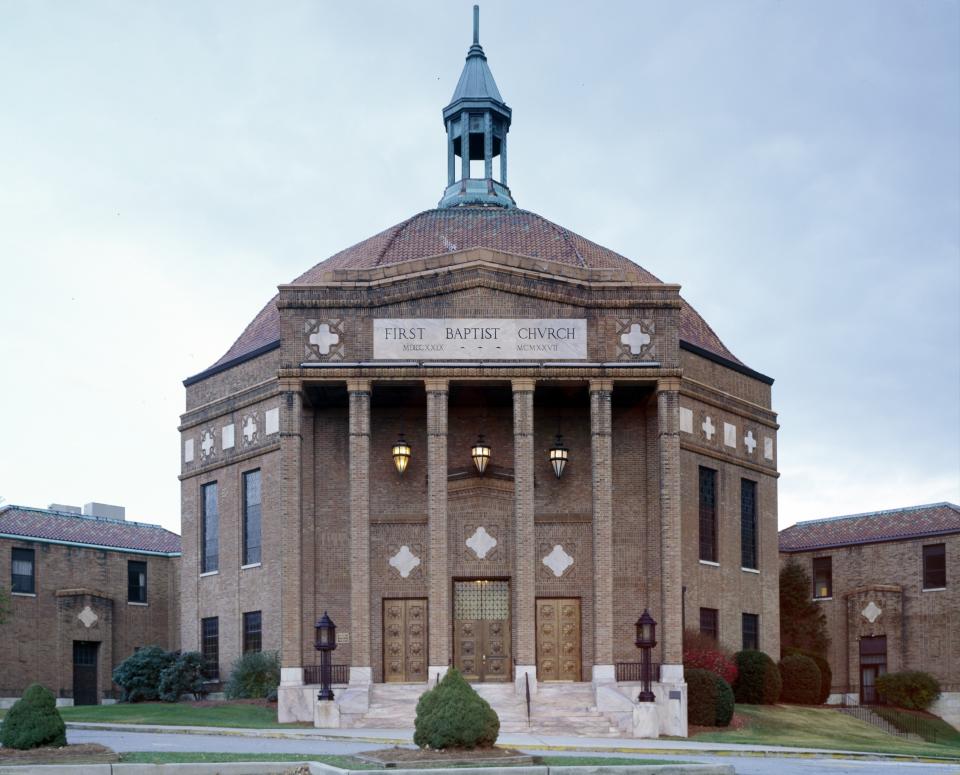
First Baptist church in Asheville, North Carolina
Built in the 1920s based on architect Douglas Ellington’s designs, this dome-shaped church is packed with Art Deco detailing, such as diamond-shaped panels and floral motifs in the sanctuary, and has a brick-and-marble exterior.
Gol Stave Church (Minot, North Dakota)
Located in Scandinavian Heritage Park, which was established in the late ‘80s, structures reminiscent of what you’d find in Iceland, Norway, Sweden, Finland and Denmark are here. Gol Stave Church is one of those, a true replica of the church in Gol, Hallingdal, Norway.
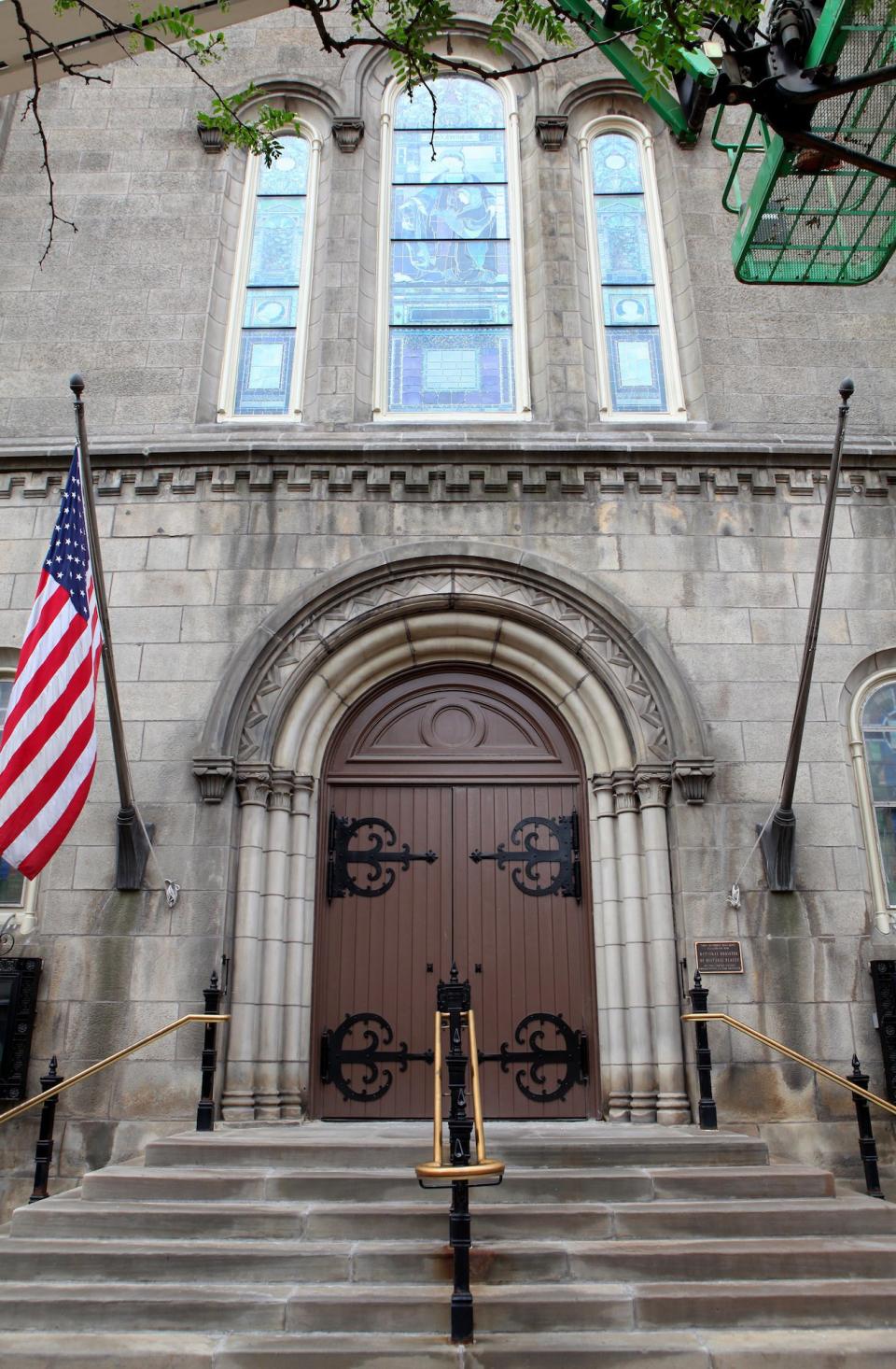
Cleveland Cityscapes And City Views
Dating back to 1855, a medieval exterior gives way to Tiffany stained-glass windows inside Old Stone Church where not only are Presbyterian services held on Sunday, so is weekday afternoon yoga.
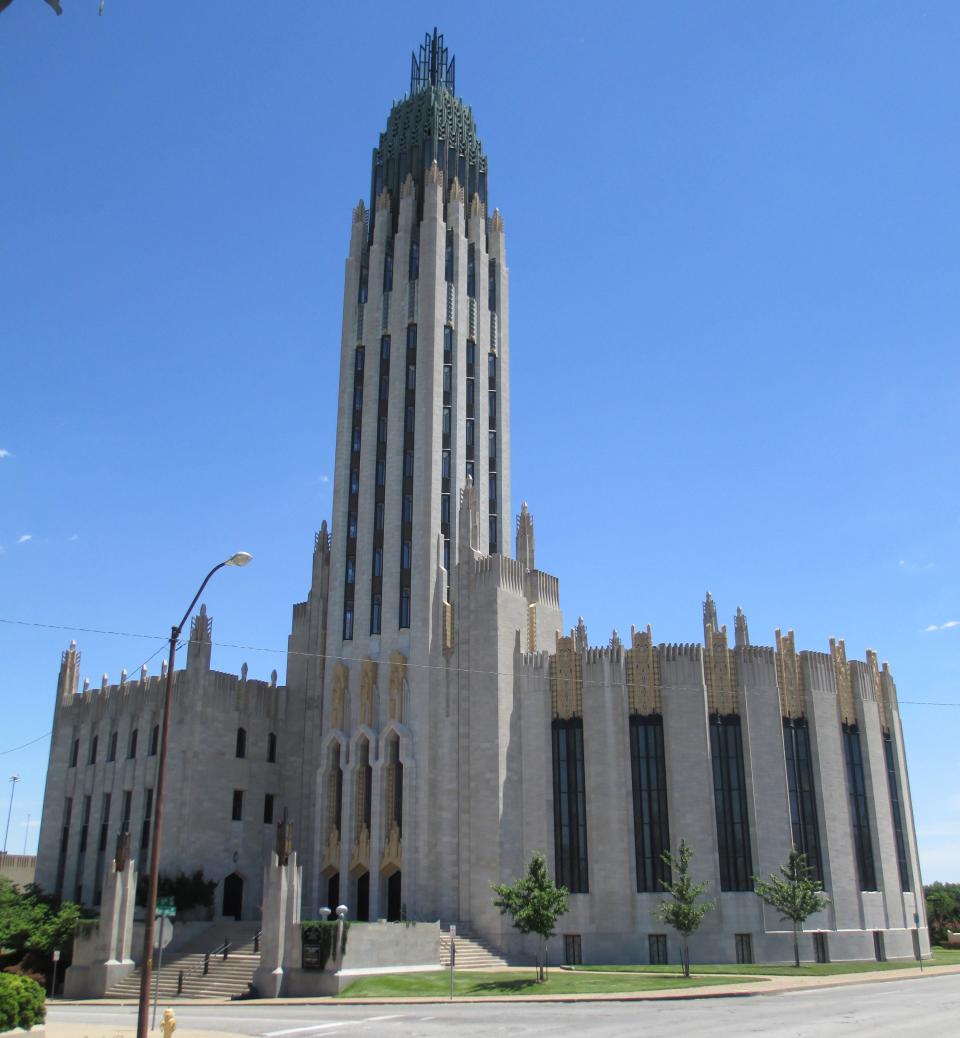
Boston Avenue United Methodist Church (Tulsa, OK)
Towering above downtown Tulsa, Boston Avenue United Methodist Church’s Art Deco design debuted in 1929. It’s on the National Register of Historic Places.
Unitarian Universalist Fellowship of Central Oregon (Bend)
Modern in design, the Unitarian church in Bend—completed in 2016—was also designed to be sustainable and eco-friendly. It spans 19,000 square feet and has breathed new life into the church, including a boost in membership.
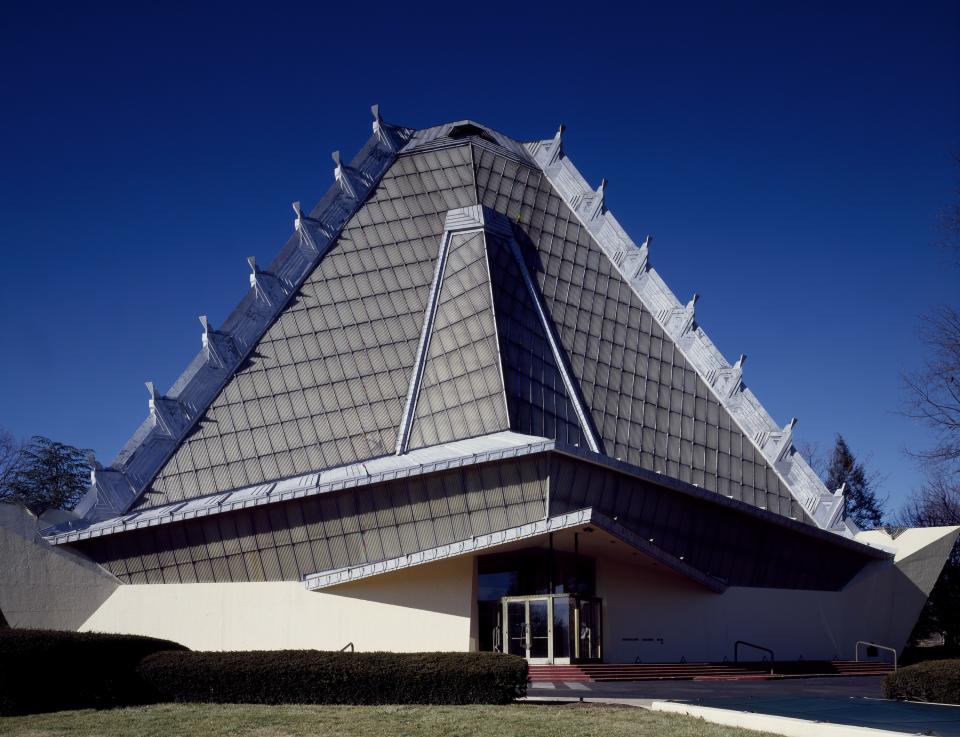
Beth Shalom Synagogue, in suburban Elkins Park, outside Philadelphia, Pennsylvania
Frank Lloyd Wright’s lone synagogue design lies in this Philly suburb riffs on Mayan Revival architecture and its interior lighting casts a soft glow at night, as seen from outside, and thanks to translucent fiberglass walls.
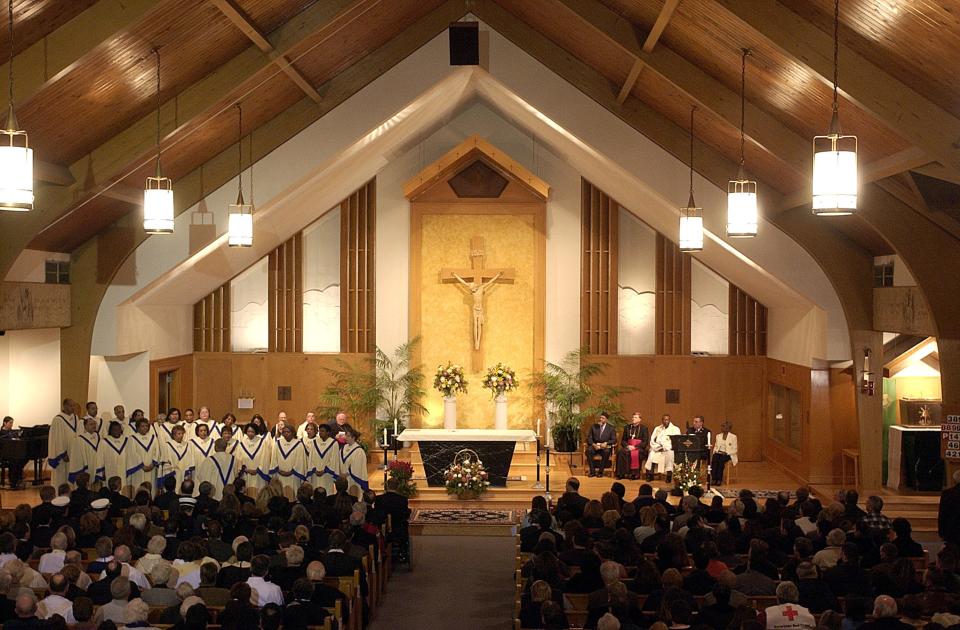
Interfaith Memorial Service For Rhode Island Fire Victims
On the Portsmouth Abbey campus, Church of St. Gregory the Great’s design—at the hands of architect Pietro Belluschi, featuring a redwood interior and fieldstone walls (sourced from nearby land)—was inspired by a 16th Century church in Ravenna, Italy.
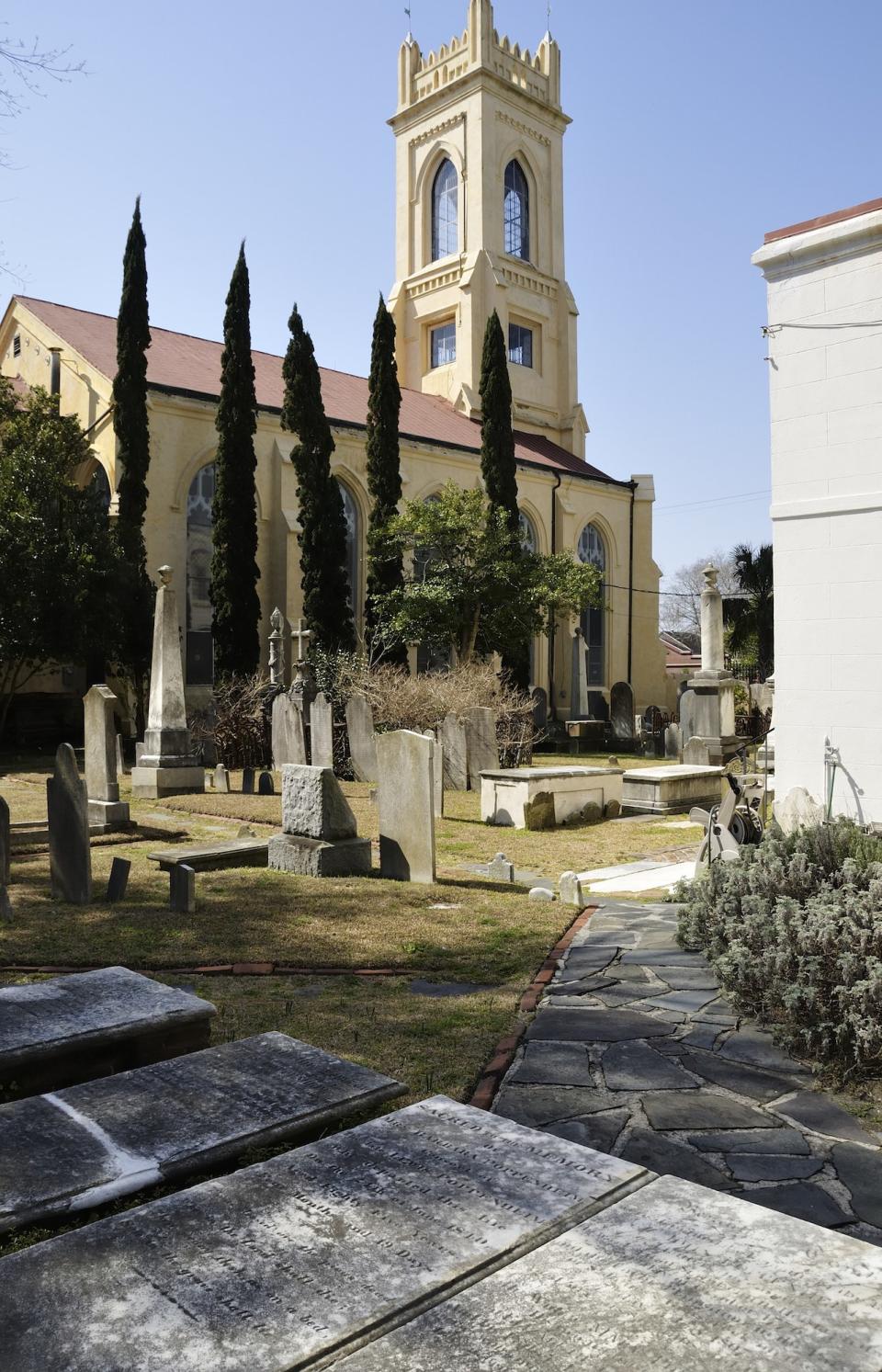
Unitarian Church, Charleston, South Carolina
A popular tourist attraction is the Unitarian Church in Charleston’s Gothic-style graveyard with its drooping Spanish moss. Tours of the church’s interior—completed just after the Revolutionary War in 1776, making it Charleston’s second-oldest church, and inspired by Chapel of Henry VII at Westminster Abbey—are led by docents each September through June.
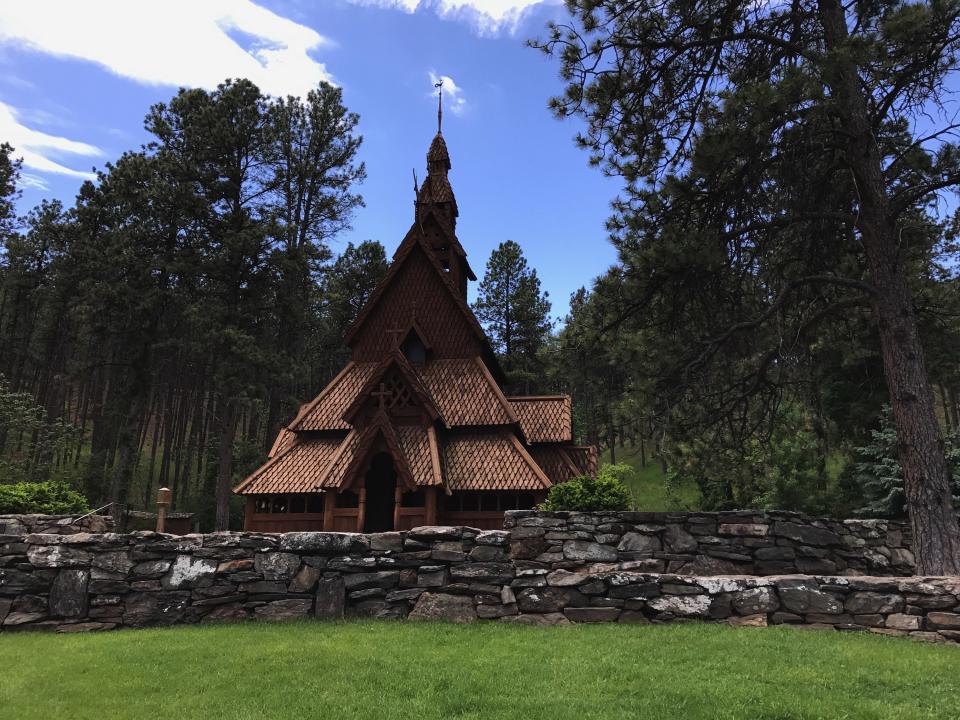
This eye-catching design recalls Norway, not South Dakota, but that’s because Chapel in the Hills (http://www.chapel-in-the-hills.org) hearkens back to South Dakotans’ Norwegian heritage. Built in the 1960s, it’s a replica of the Borgund stavkirke, which dates back to 1150 AD and is in Laerdal, Norway.
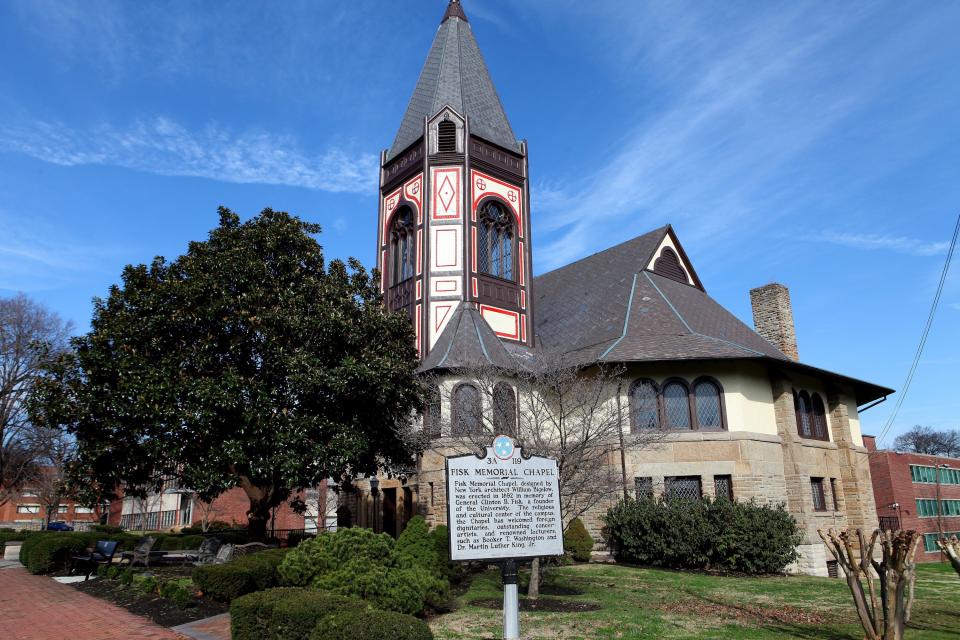
Nashville Cityscapes And City Views
Located on the Fisk University campus, the chapel has welcomed guest preachers like Rev. Dr. Martin Luther King Jr. and Jesse Jackson since its 1892 construction. Among the unique attributes are the church’s three-sided balcony, and one of the country’s finest pipe organs.
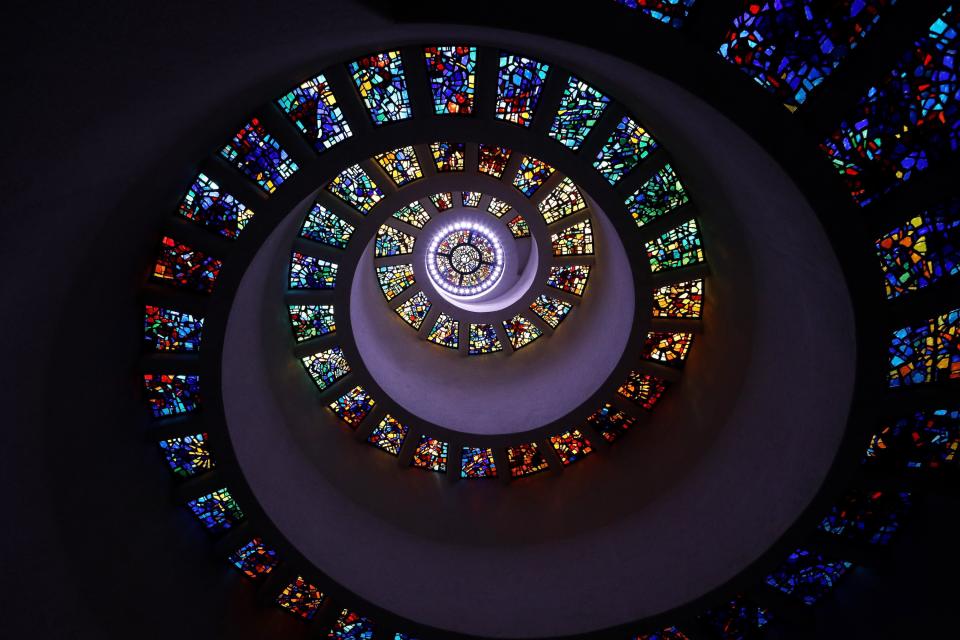
Dallas Cityscapes and City Views
Thanks-Giving Square in downtown Dallas is marked by this Phillip Johnson-designed chapel the resembles a wedding cake. It debuted along with the square in 1976. The stunning stained-glass window (Glory Window by Gabriel Loire) on a spiral ceiling is a must-see.
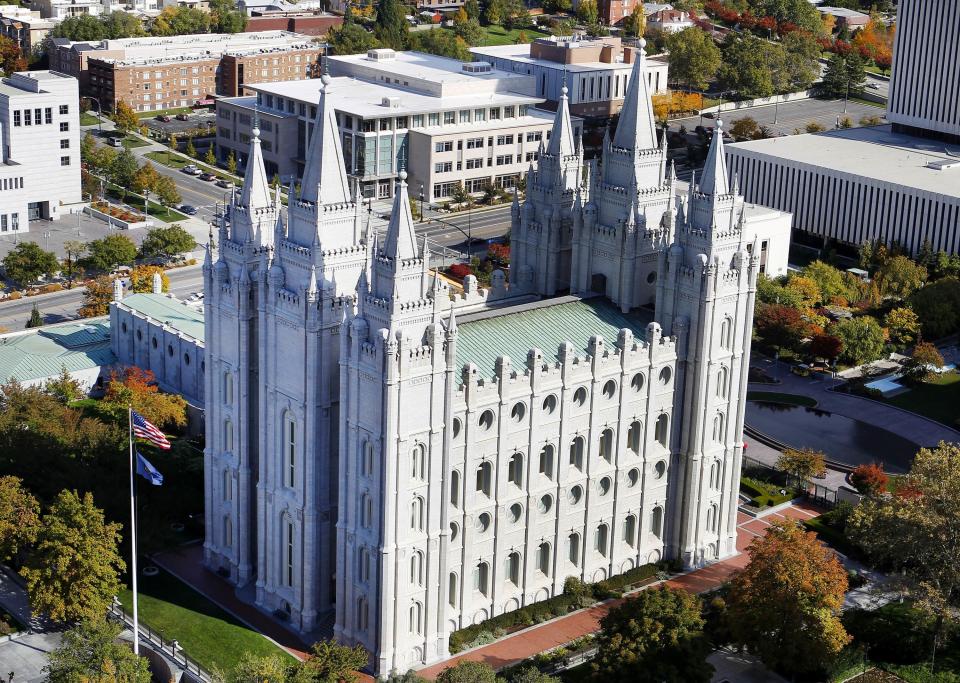
General View Of The Mormon Temple
Since its construction in 1893, this temple has served as an inspiring design for other LDS Church temples around the United States. It’s also the largest of all temples, clocking in at 253,015 square feet and took 40 years to complete.
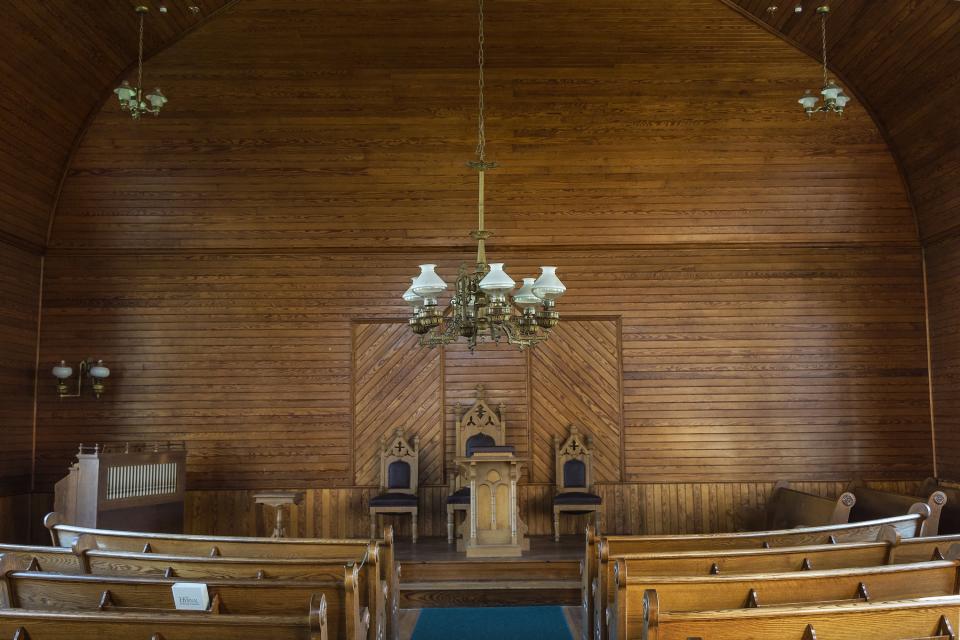
Interior of Union Christian Church located within the Calvin
The craftsmanship inside Union Christian Church, which was built during the 1840s, truly shines, including the wooden walls and ceiling. Fun historical fact: President Calvin Coolidge used to be a member of this church and he lived across the street.
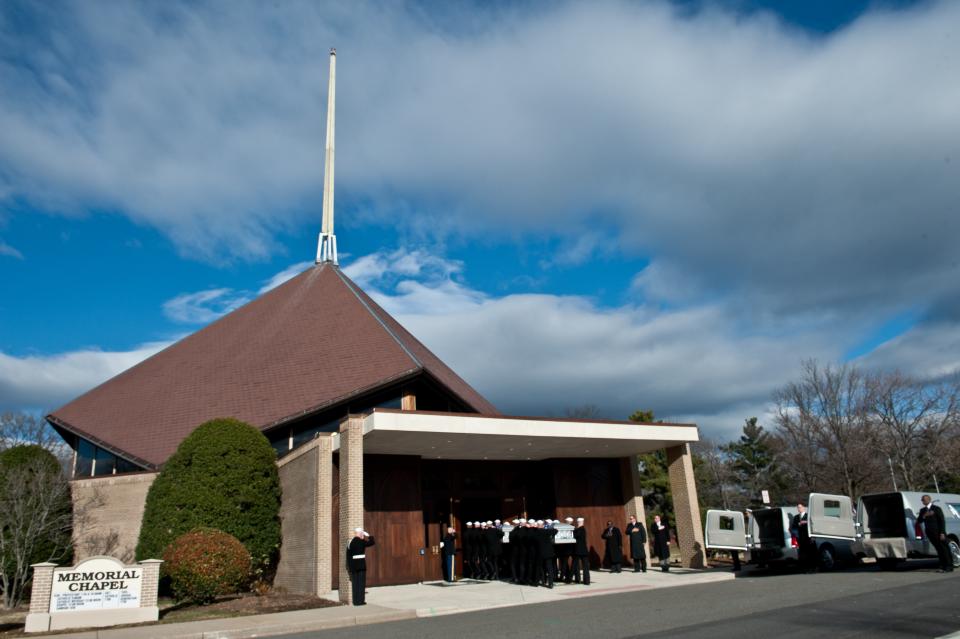
US-CIVIL WAR-REMAINS
In addition to regular services, the chapel—next to Arlington National Cemetery—is used for military funeral services led by a chaplain and is an excellent example of timeless design with its spire and shapely roof.
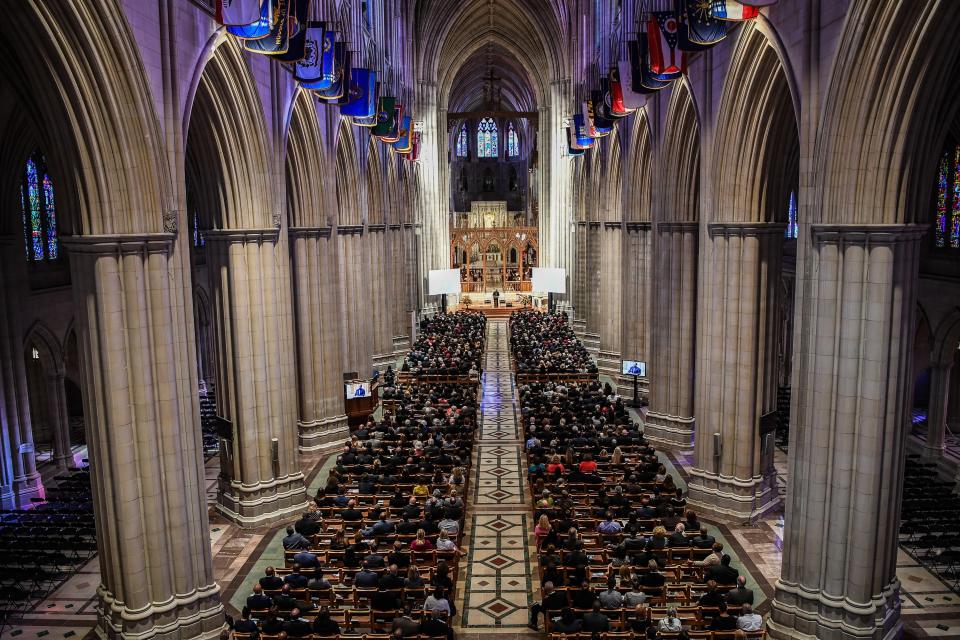
st-vance
As grand as Europe’s ancient churches, Washington National Cathedral was constructed in the nation’s capital in 1907 and has received many refurbishments since, honoring the merging of Neo-Gothic and English Gothic styles. It’s also the country’s second-largest church and on the National Register of Historic Places.
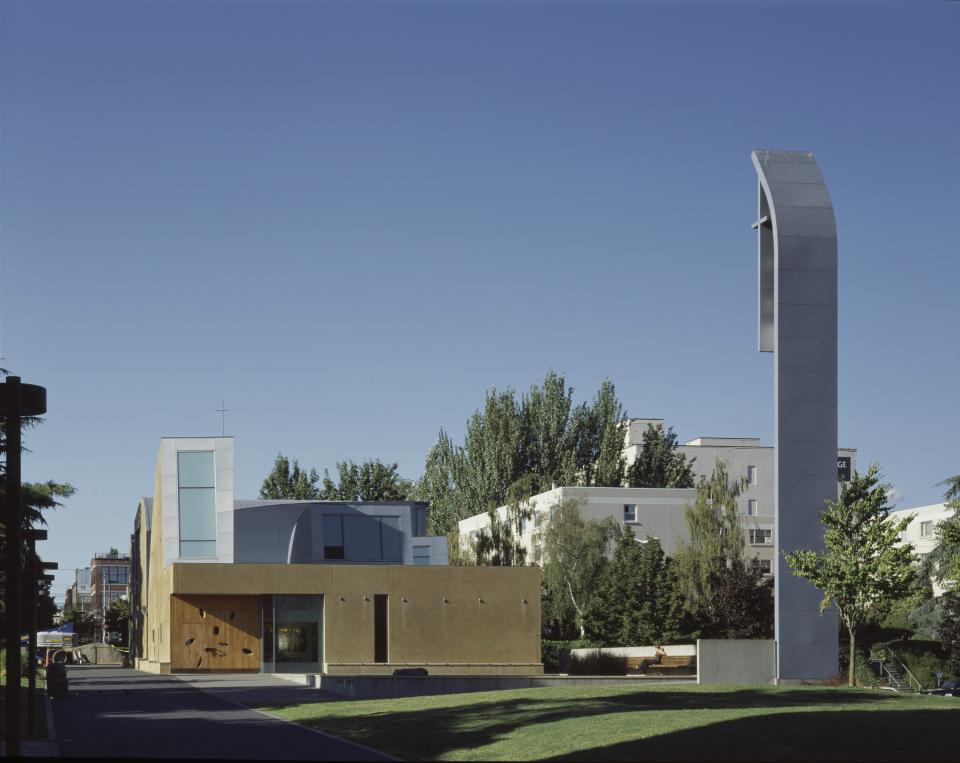
Chapel Of St Ignatius
At first glance, one might mistake Chapel of St. Ignatius for a contemporary-art museum, but no, it’s a place of worship, designed by Steven Holl in 1997. Interior pendant lighting (with exposed bulbs) and white concaved ceilings create an intimate, softer feeling than the modernized exterior.
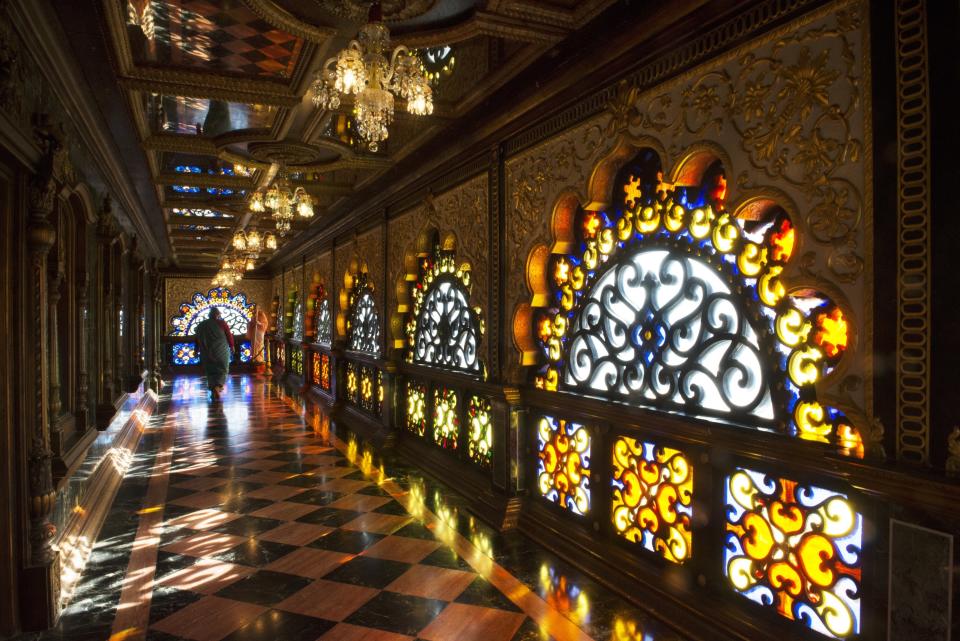
Palace of Gold in West Virginia
Rural Appalachia skewed artsy in 1979 with the construction of Palace of Gold, an ornate palace with blooming rose gardens and a staggering 100 water fountains outside. Marble imported from various spots around the world clocks in at 52 different varieties, and 1,500 pieces of stained-glass are within four windows, proof no luxury was spared in its construction.
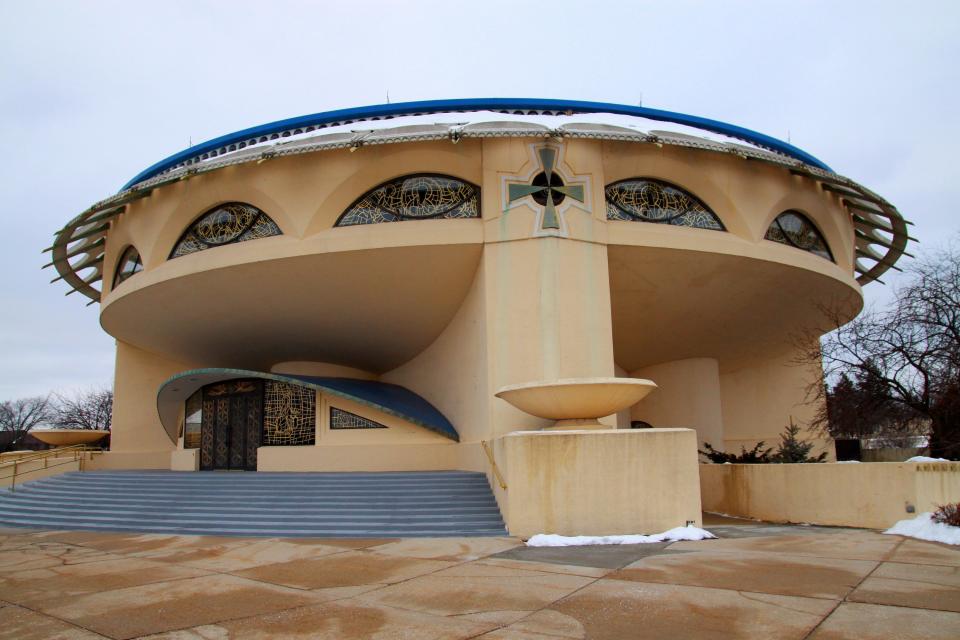
Milwaukee Cityscapes And City Views
Resembling a spaceship, the Annunciation Greek Orthodox Church in suburban Milwaukee is eye-catching, with its floating bowl shape. While based on Frank Lloyd Wright’s designs, it was one of his final commission and not unveiled until two years after he died, in 1961.
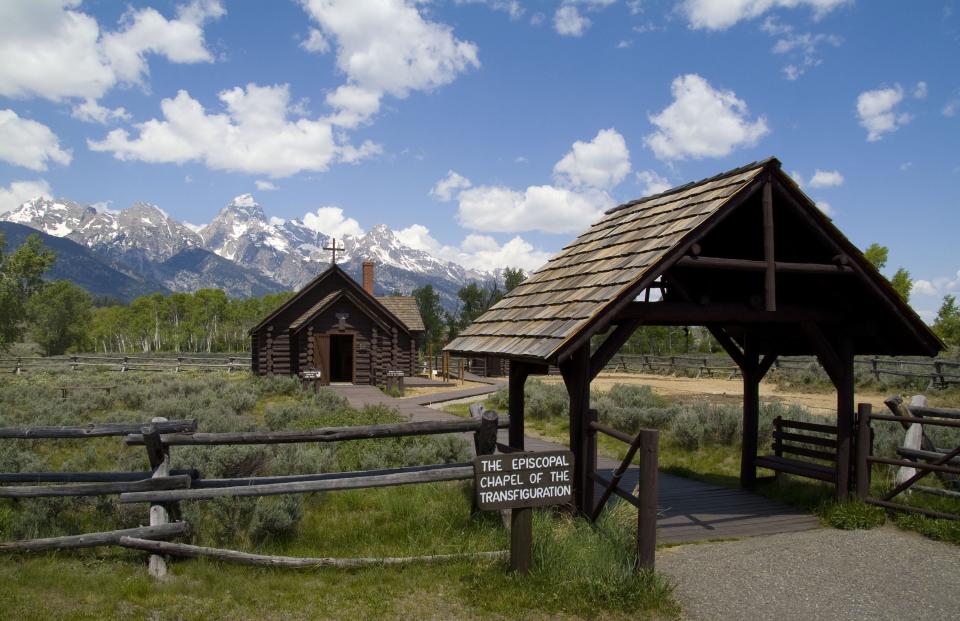
Grand Tetons National Park, Wyoming, United States.
Is there anything more charming than a steeple tucked into nature? Chapel of the Transfiguration is within Grand Teton National Park and constructed from logs, built in 1925. Holy Communion is on Sundays but only during the summer and seats just 65 people.

